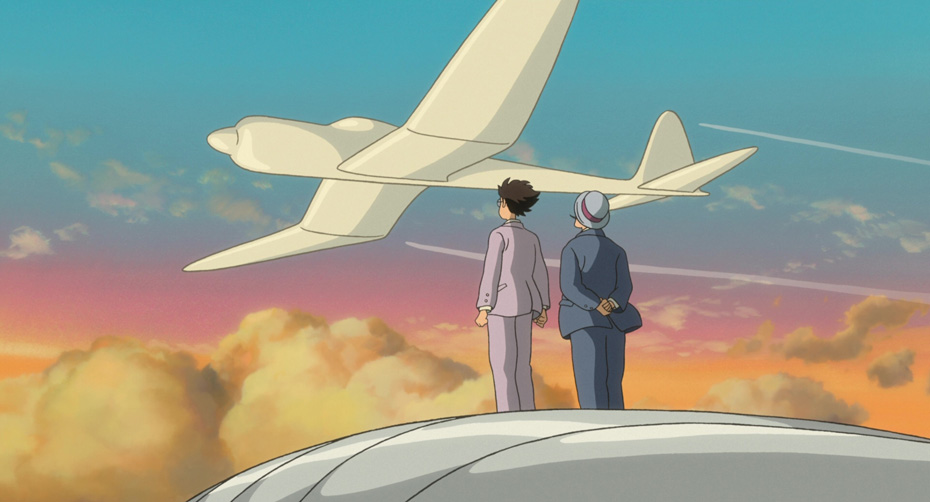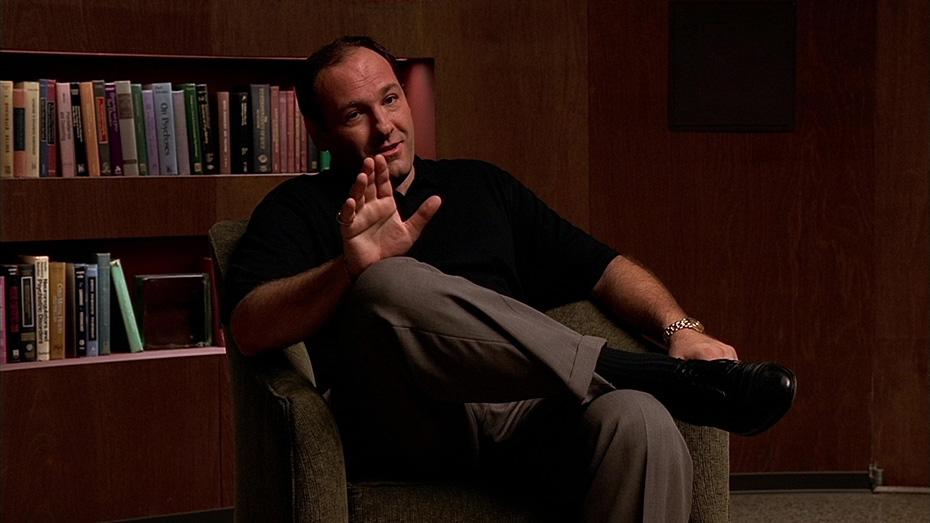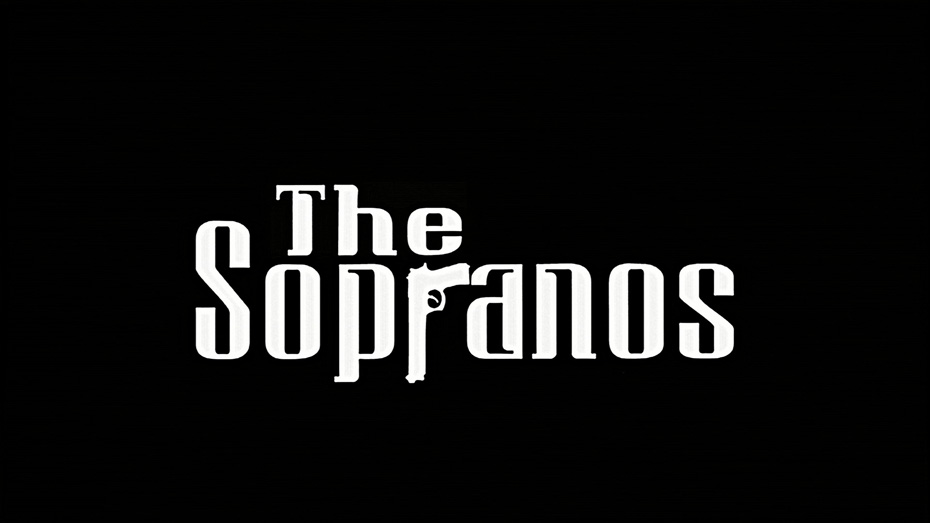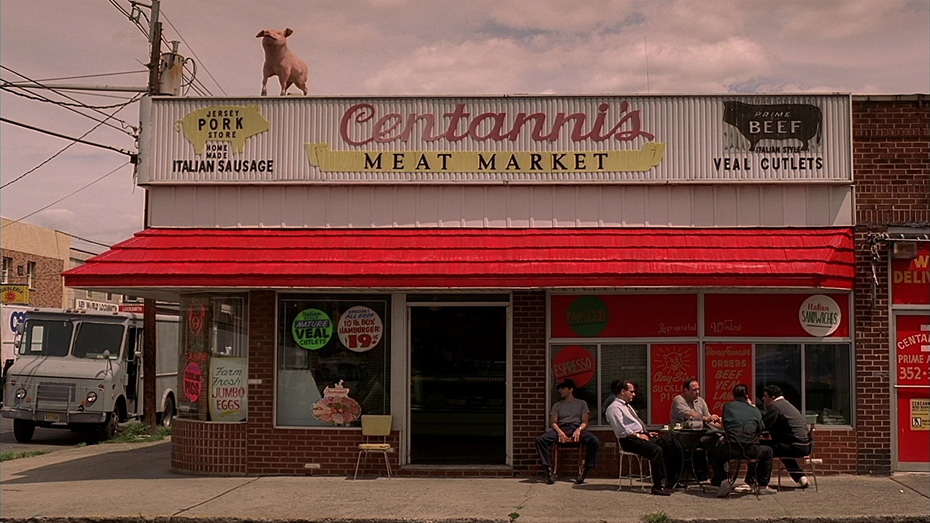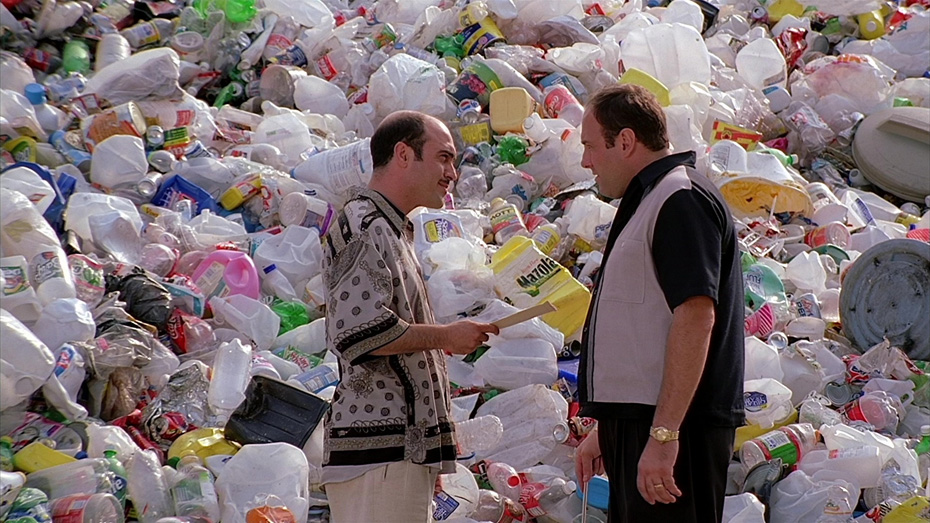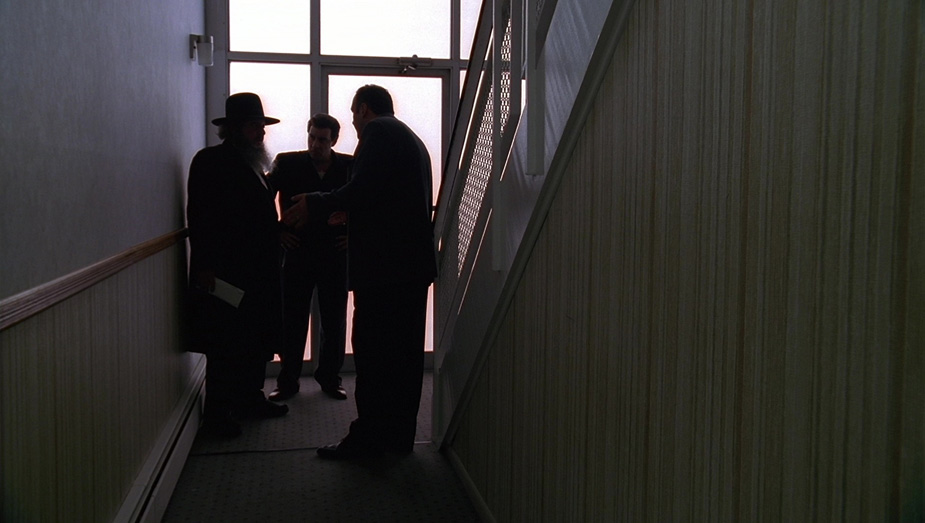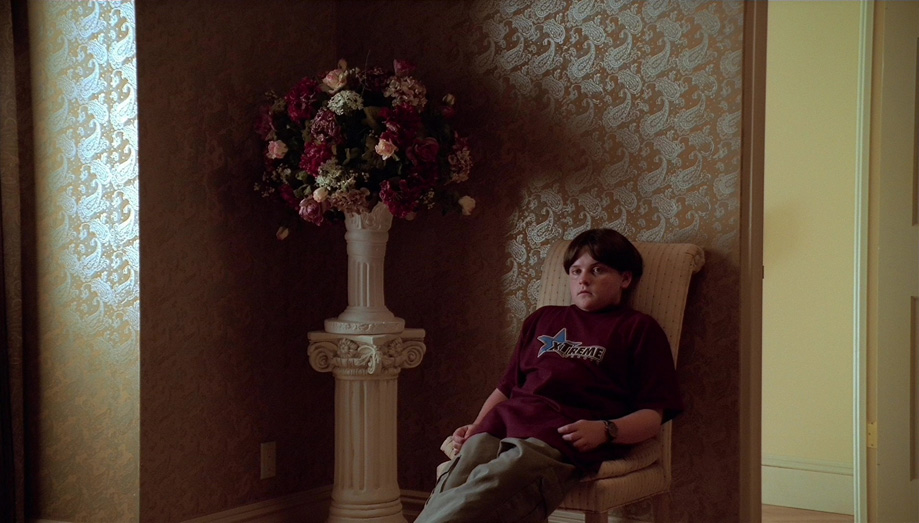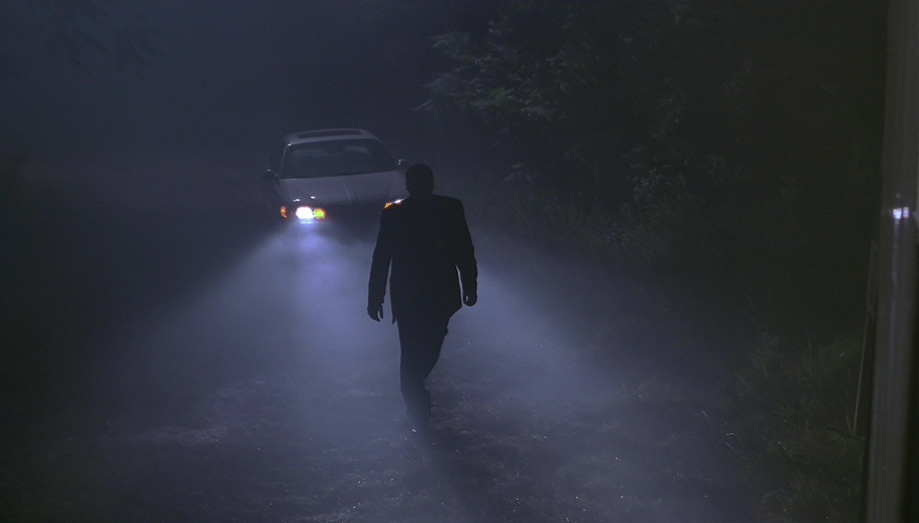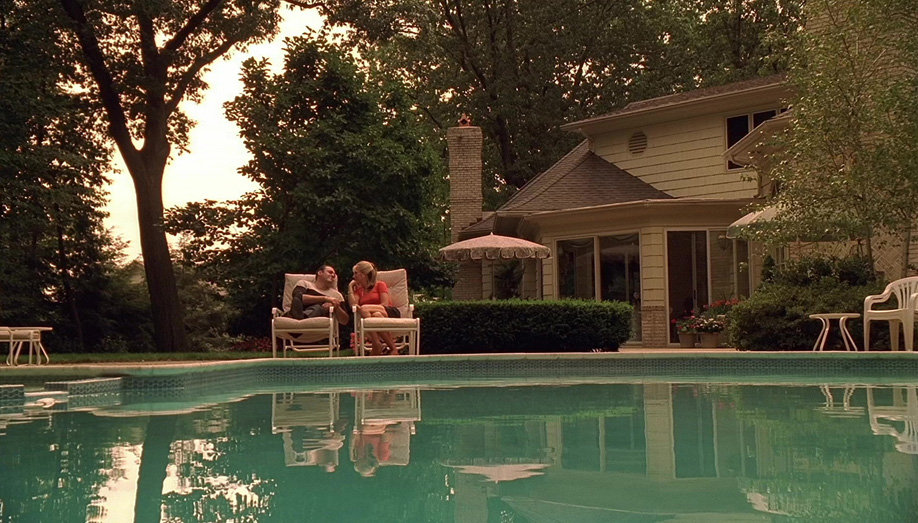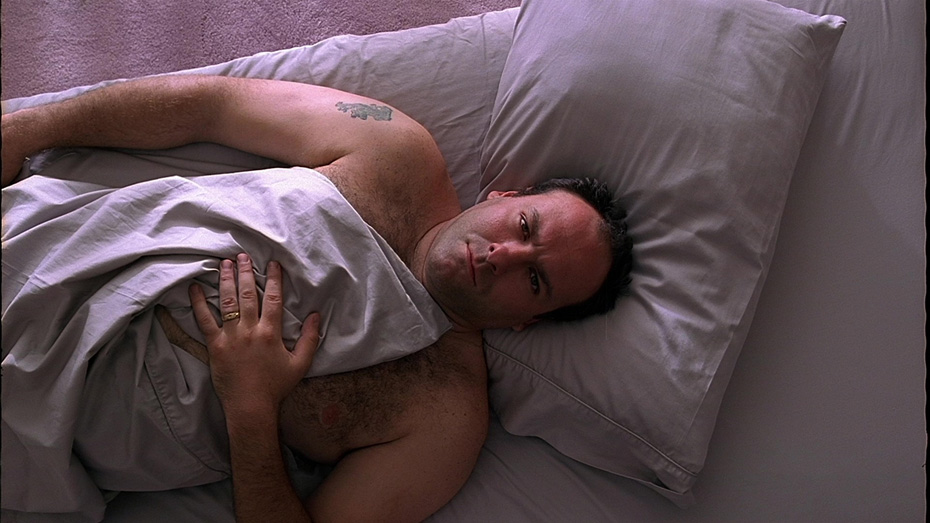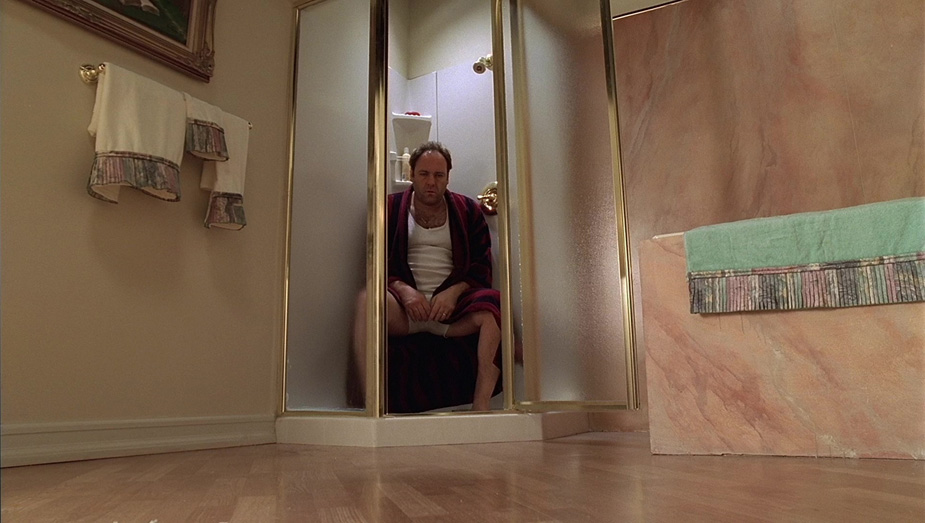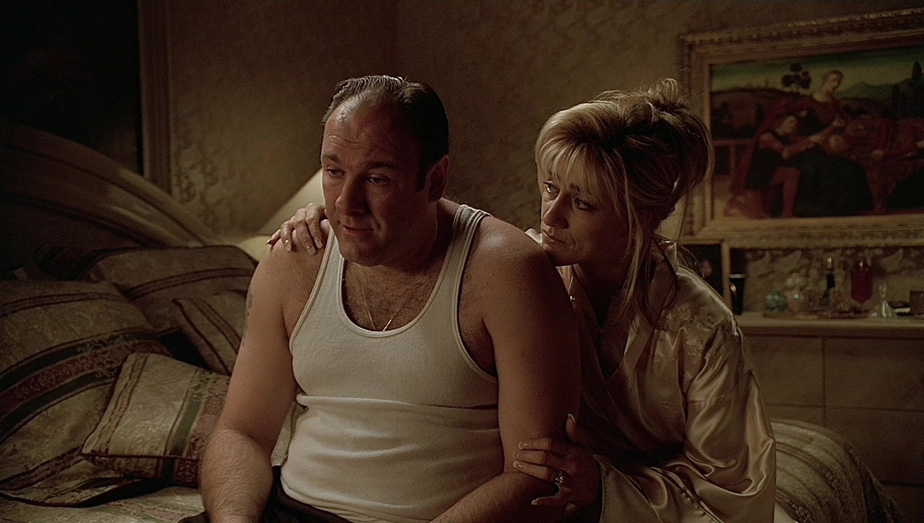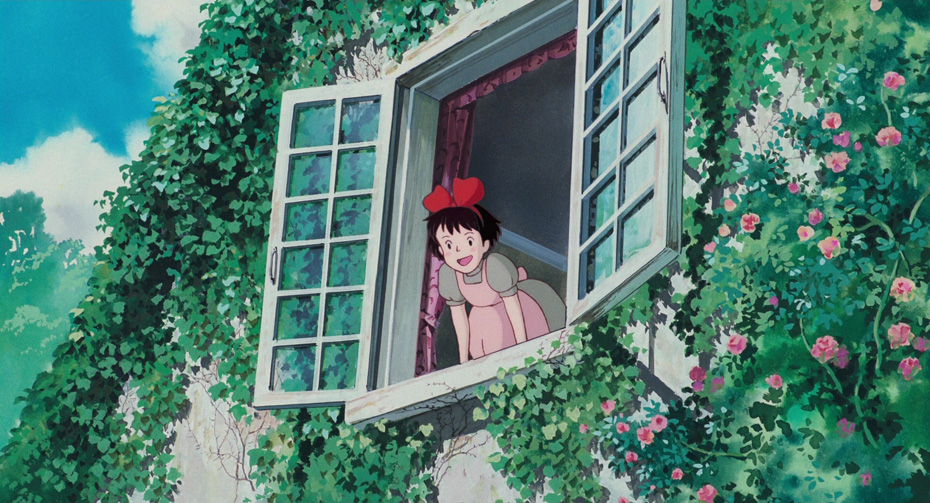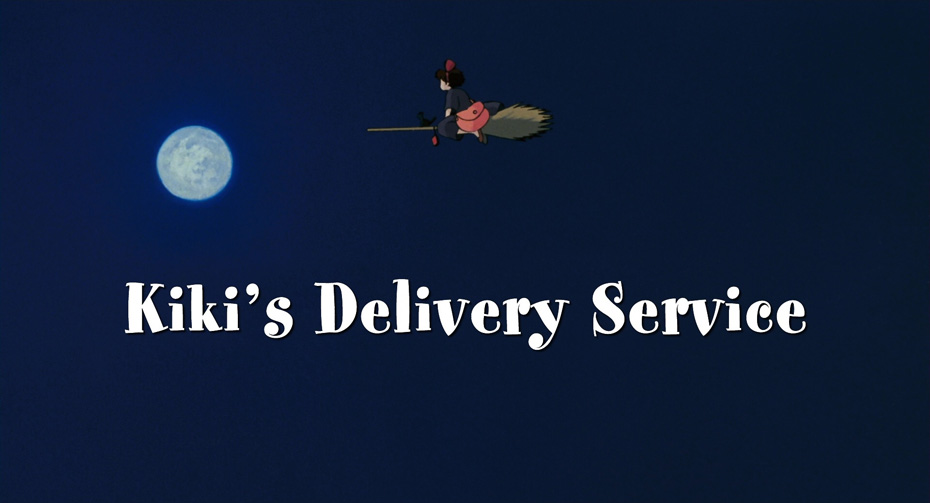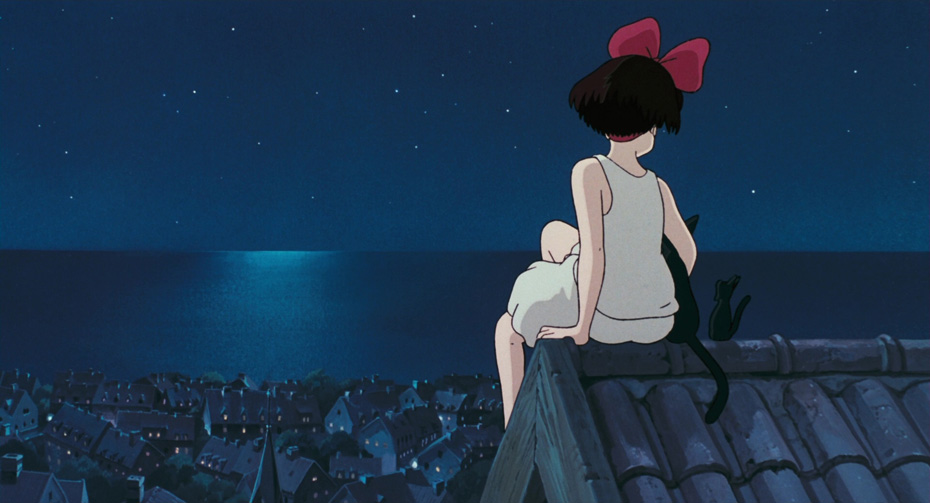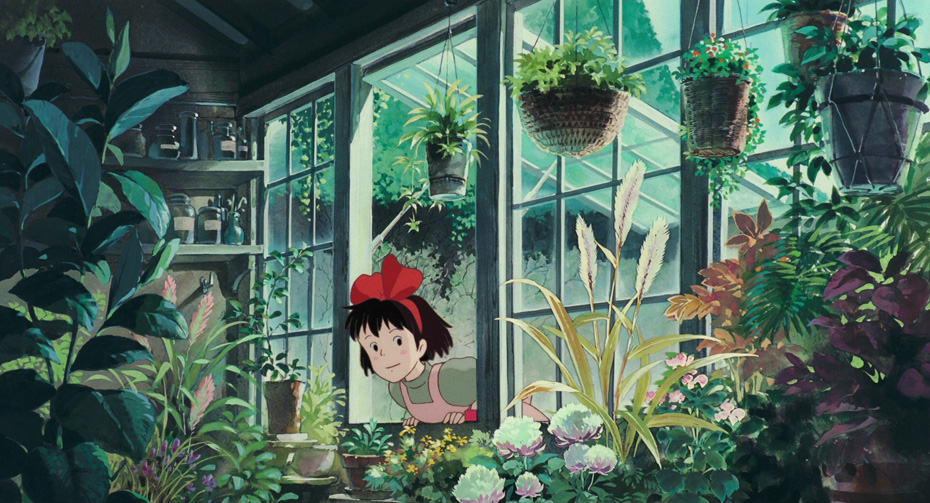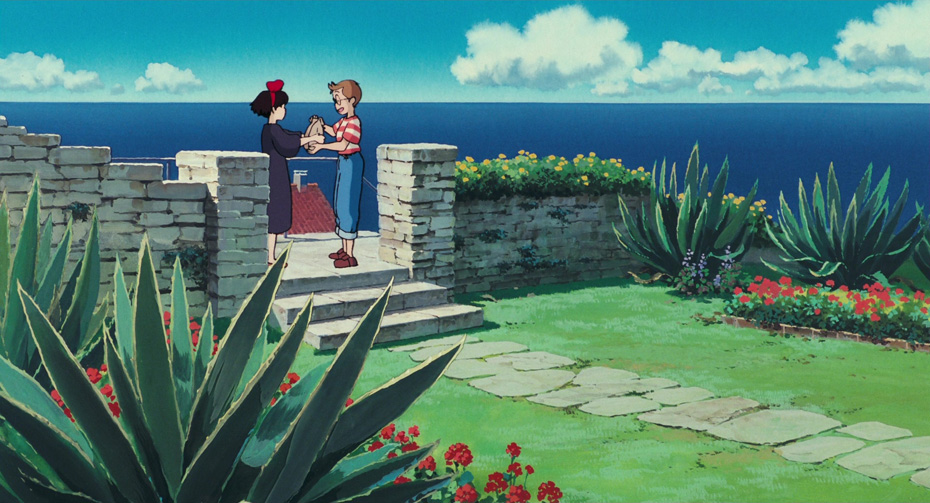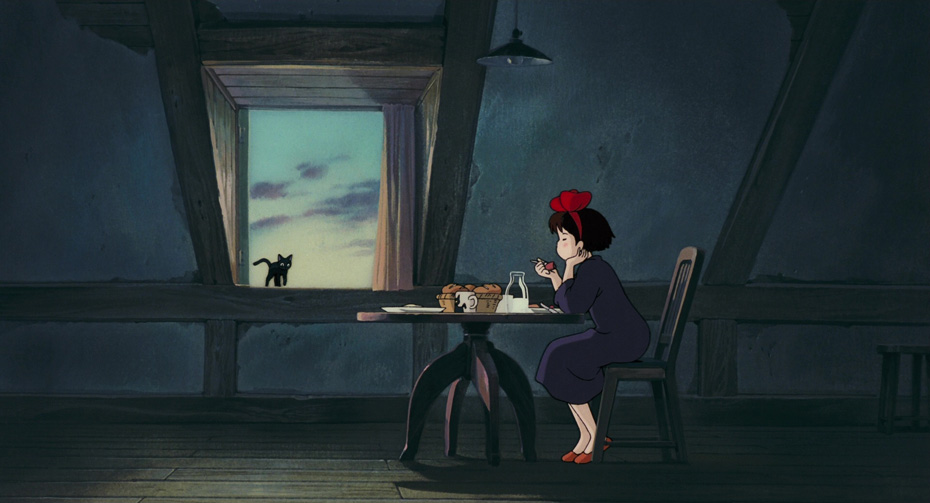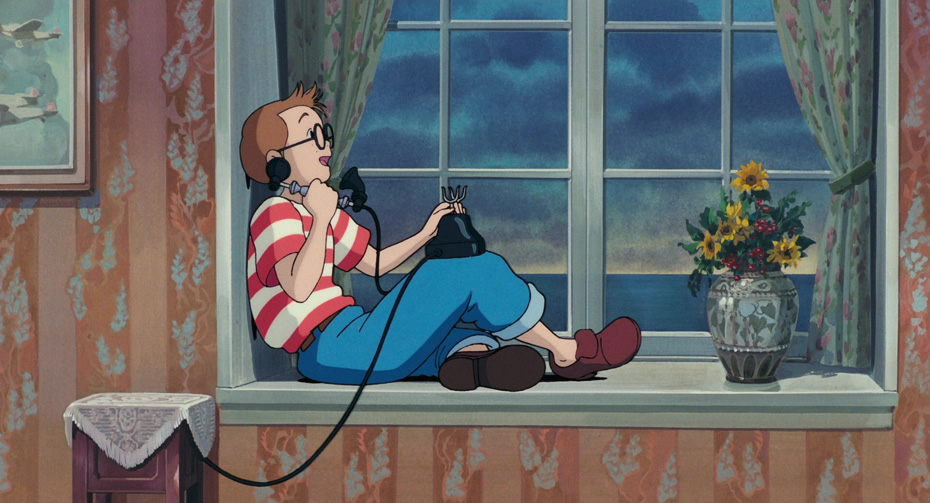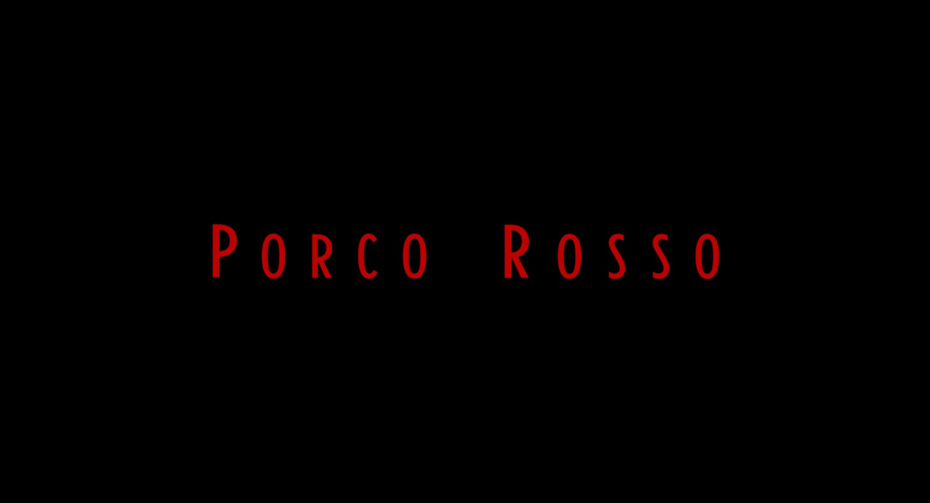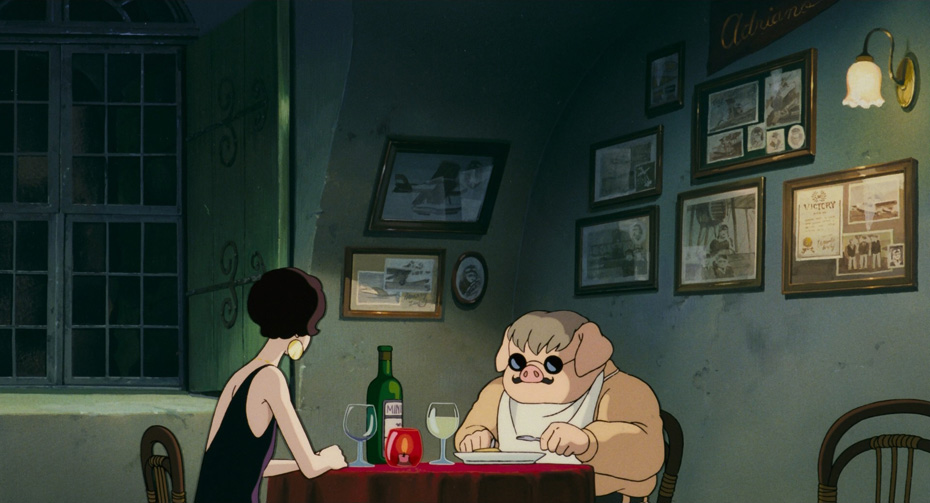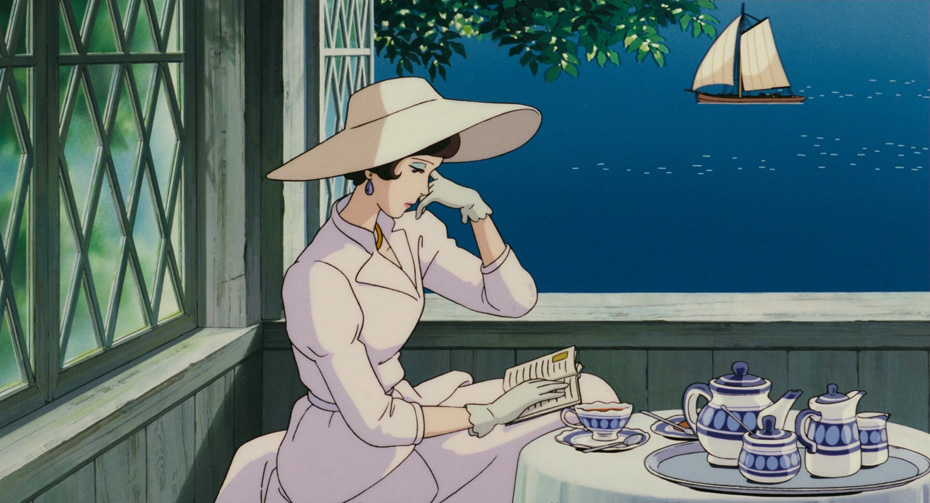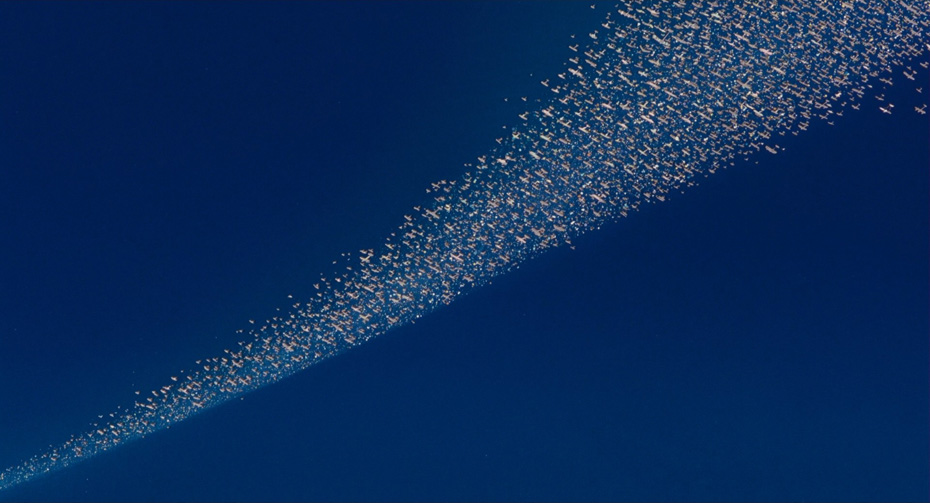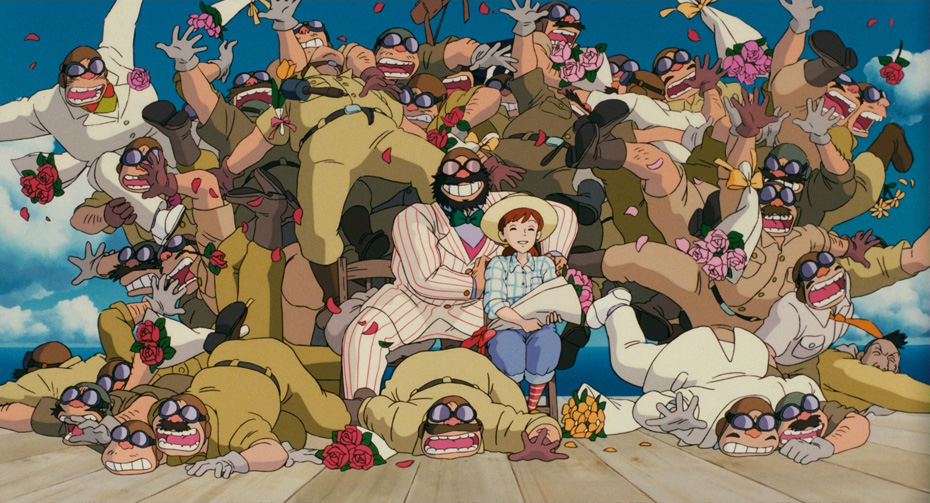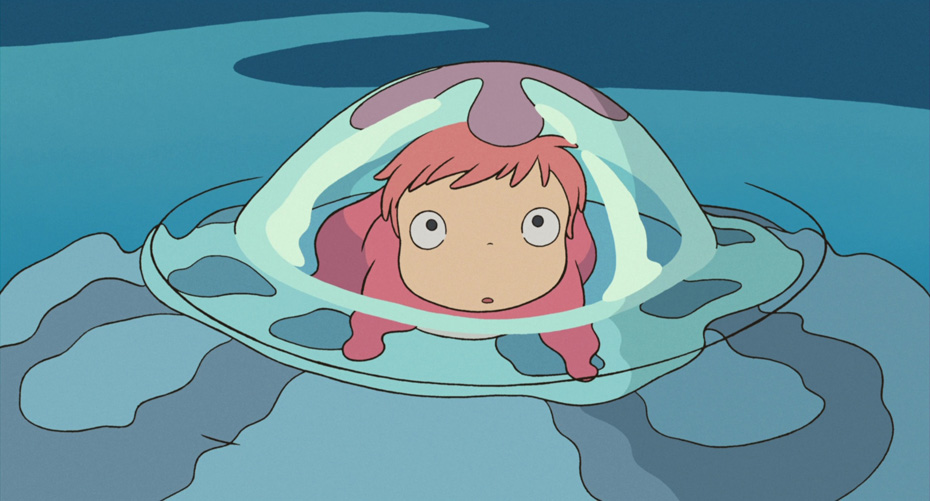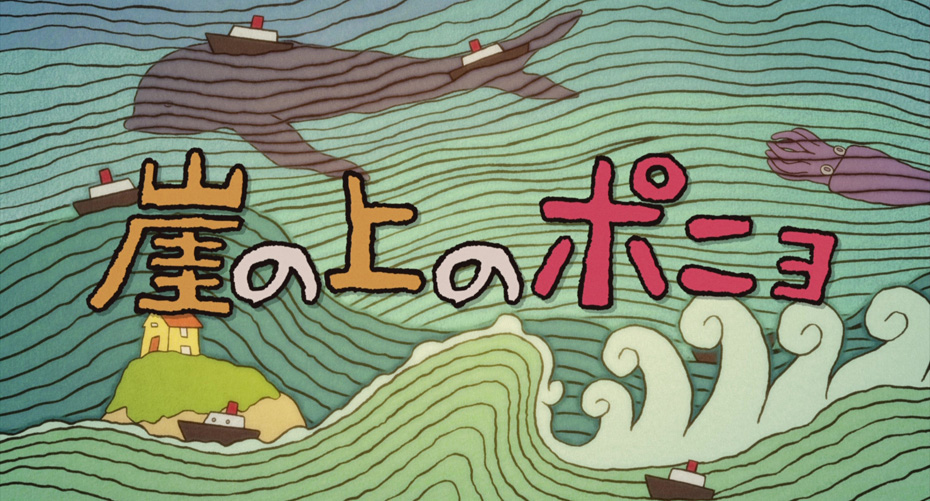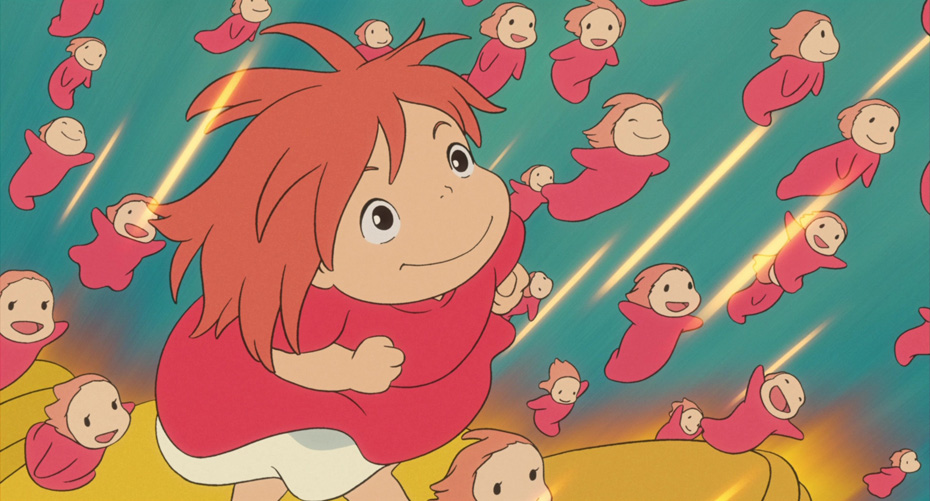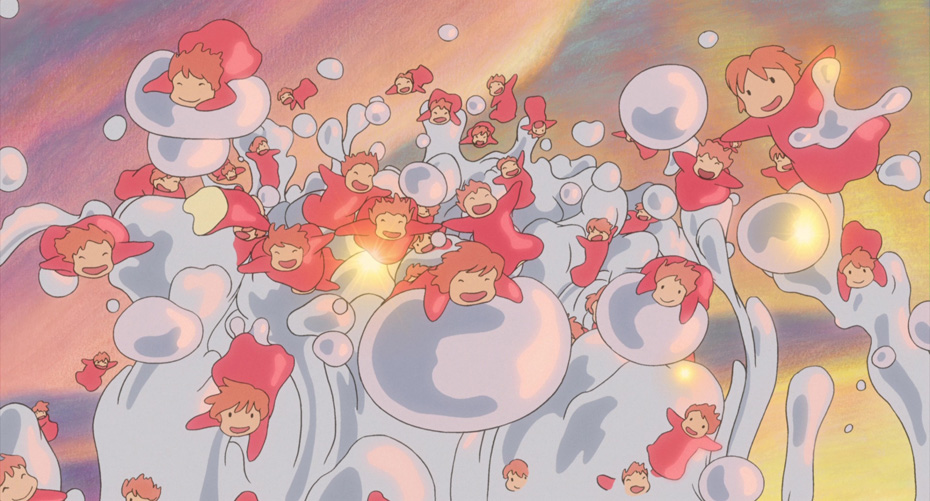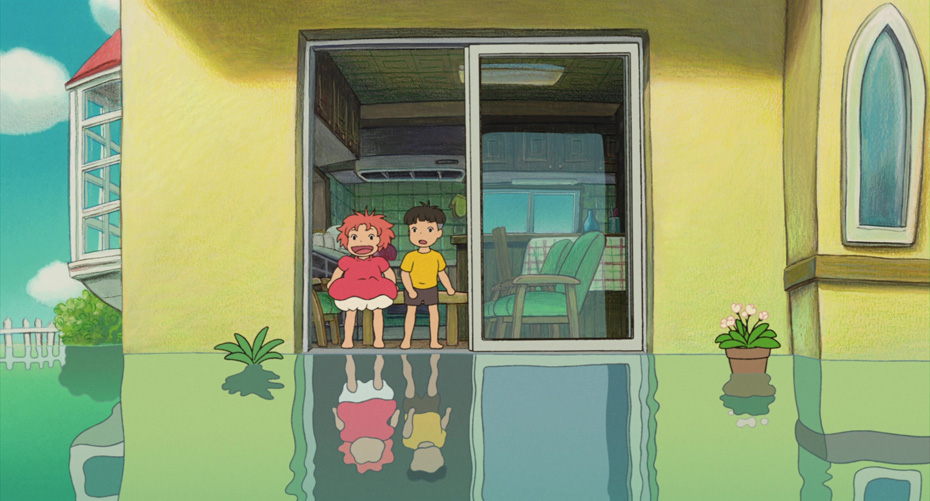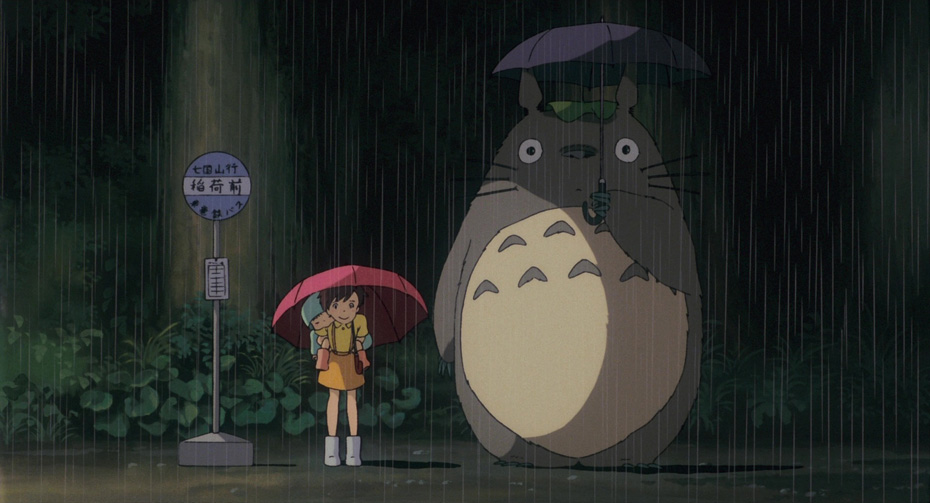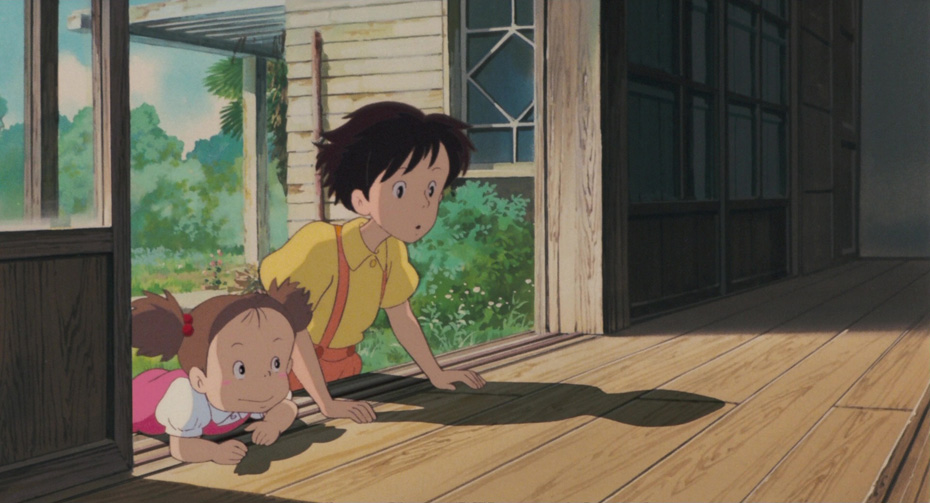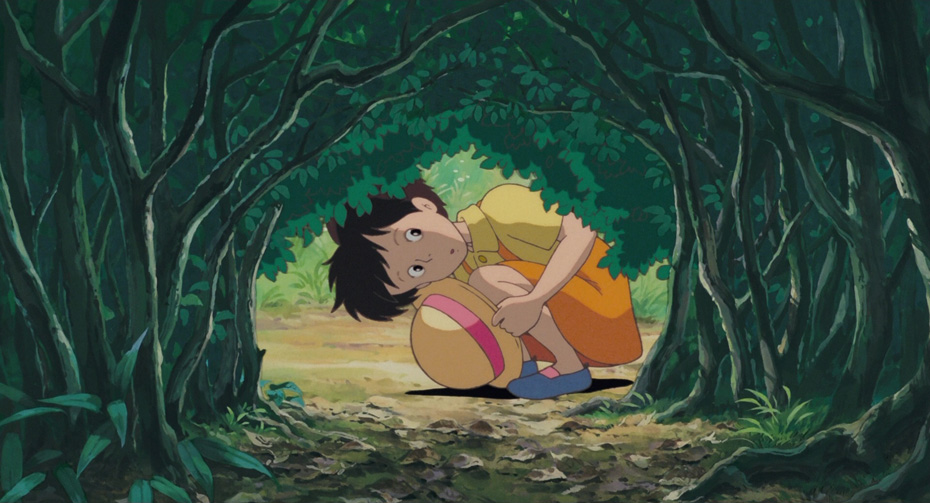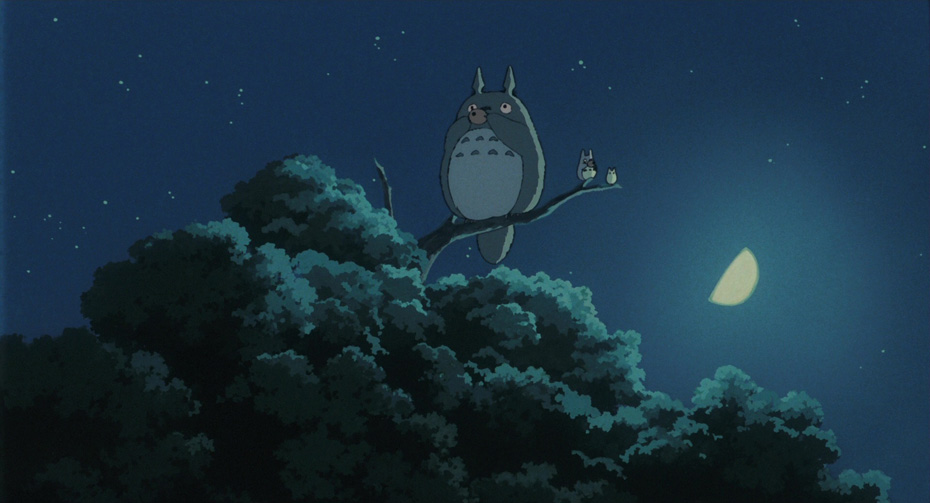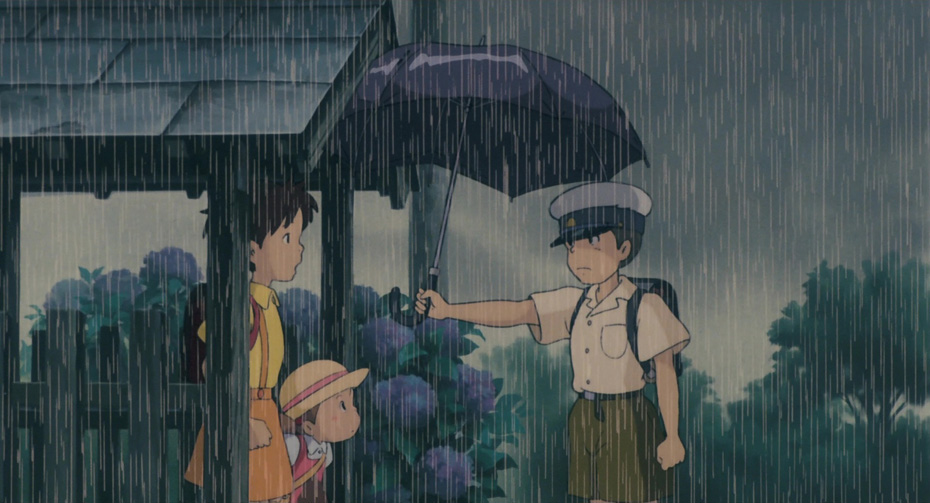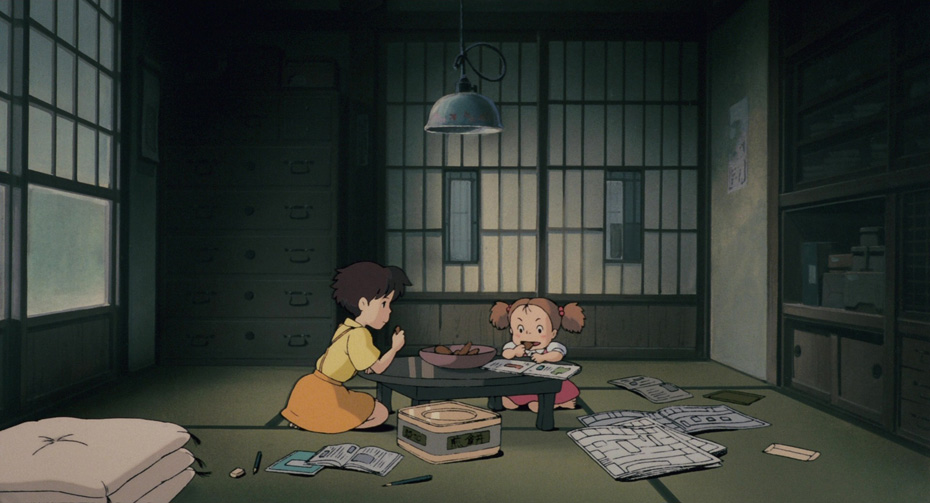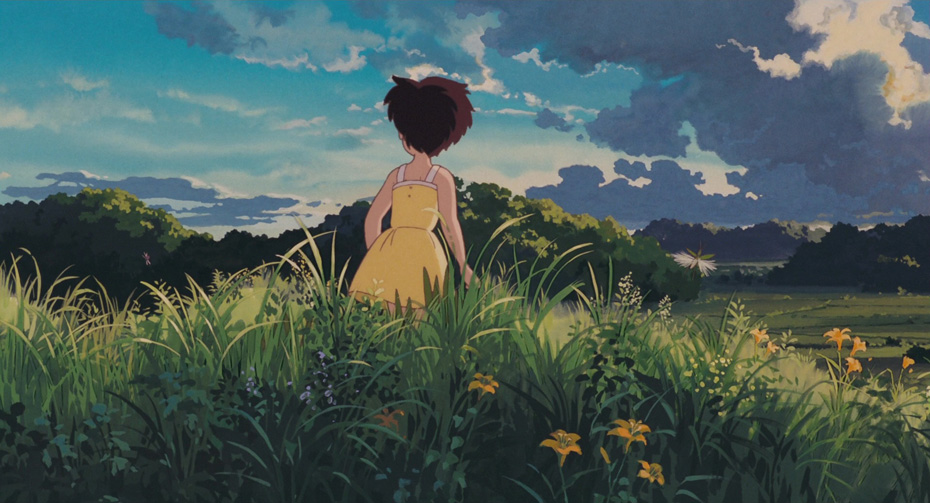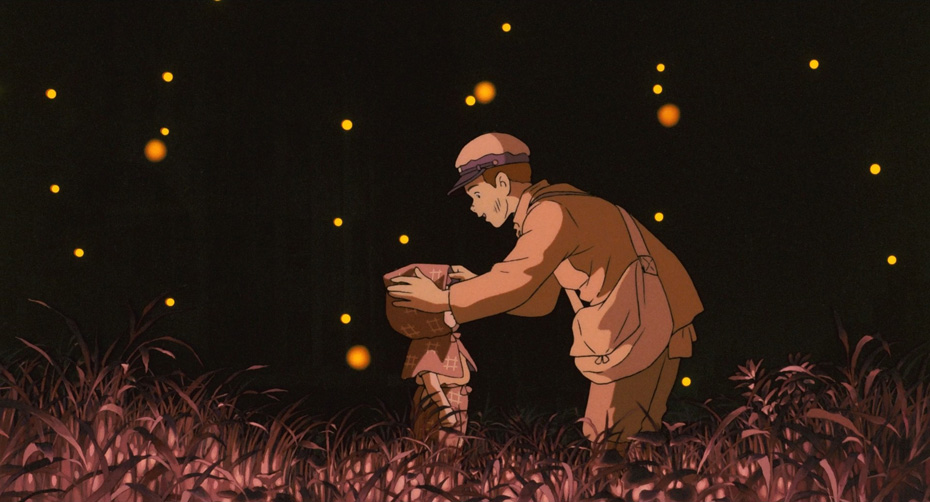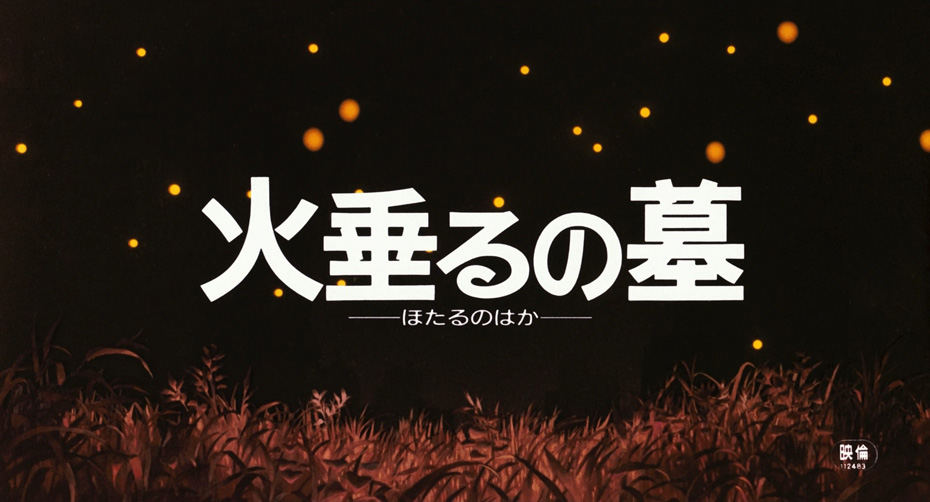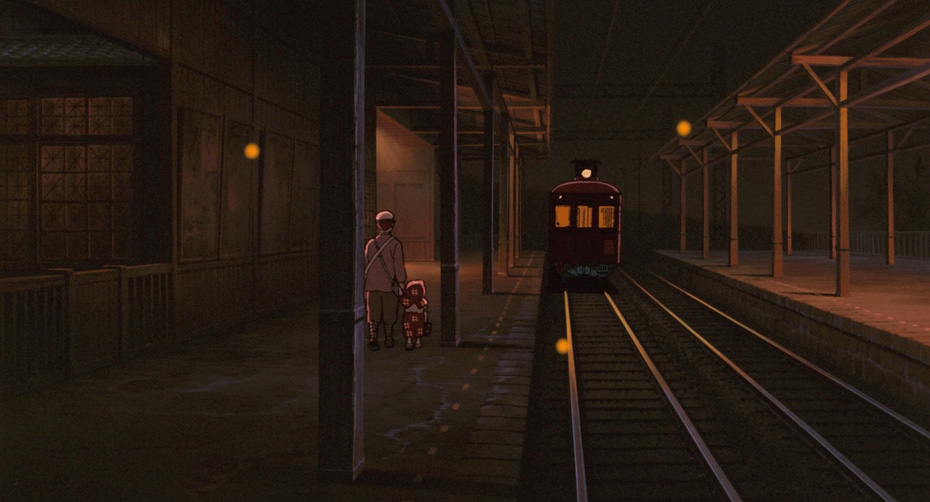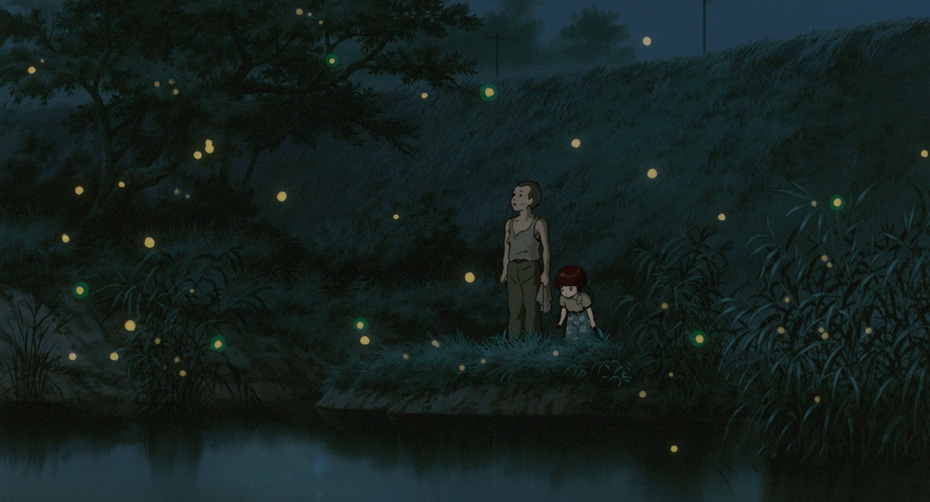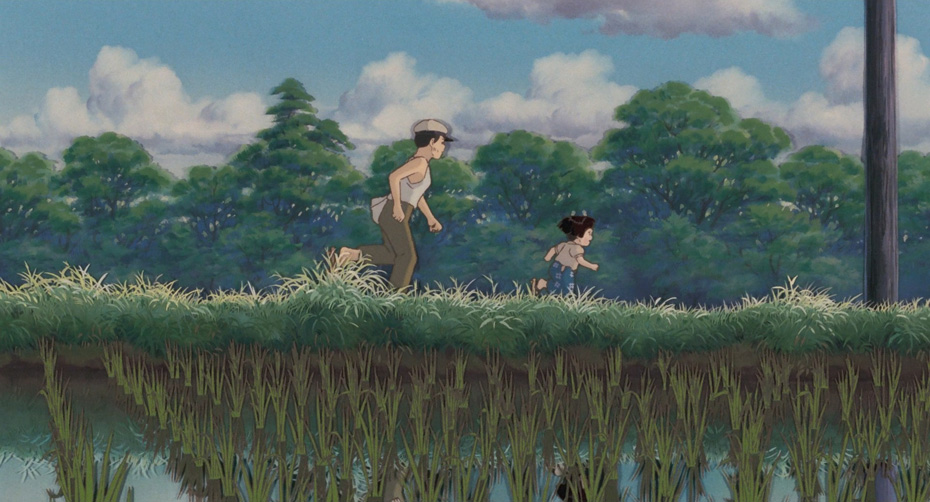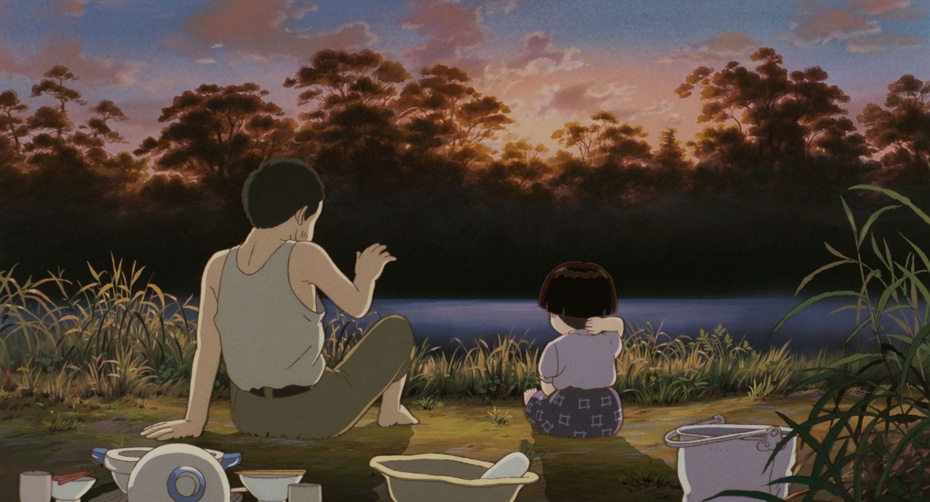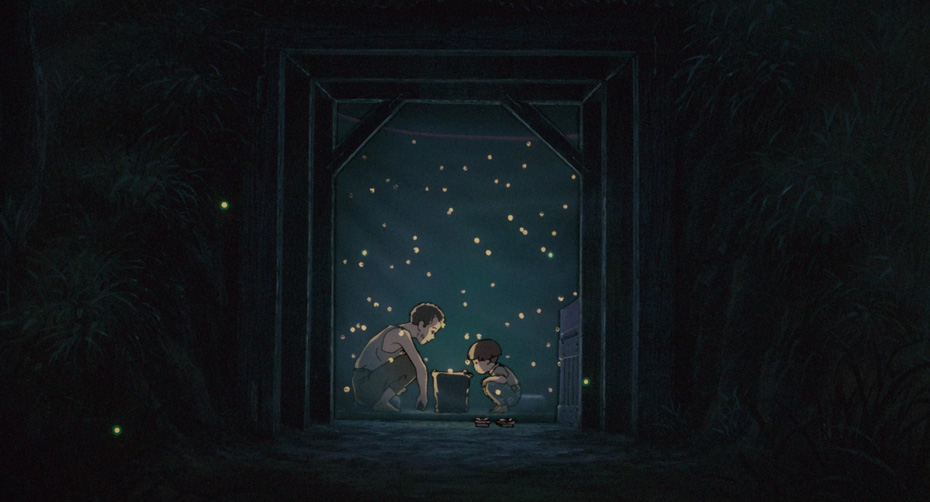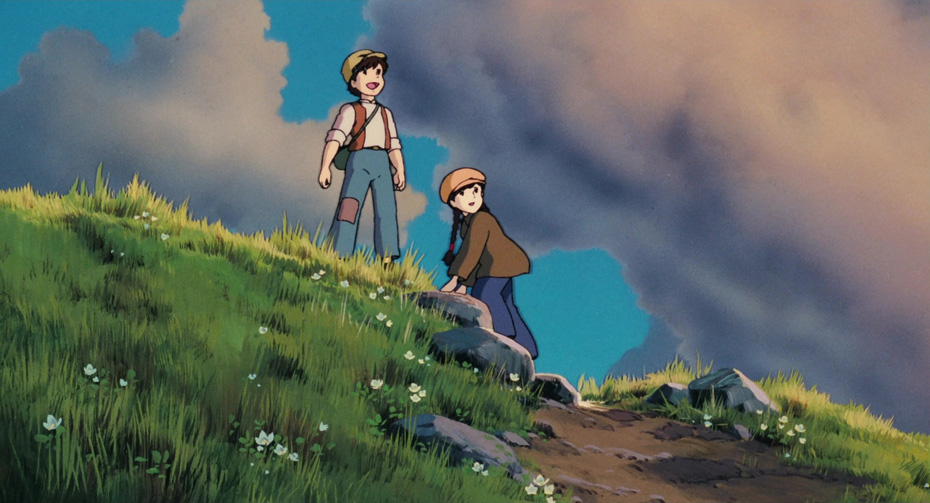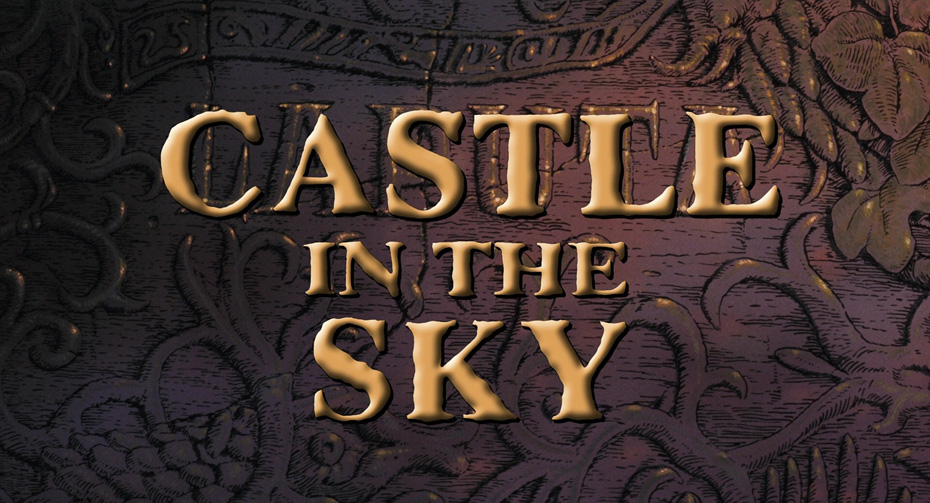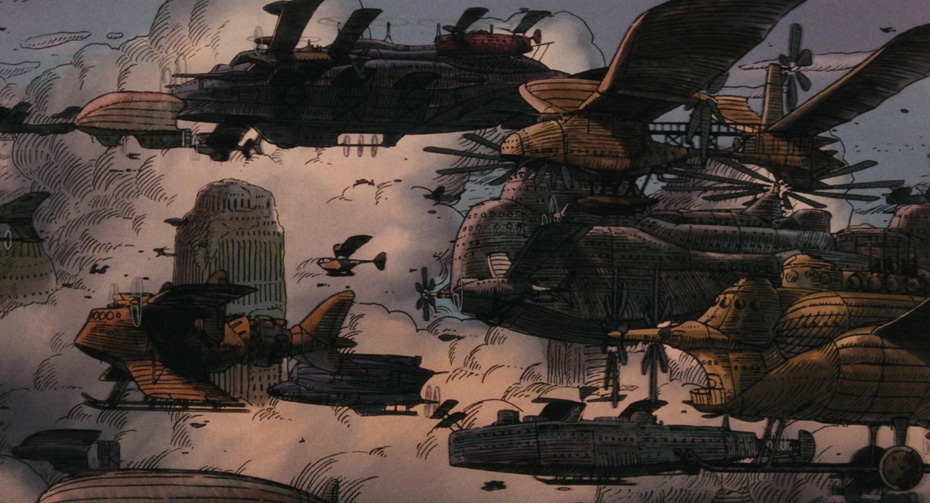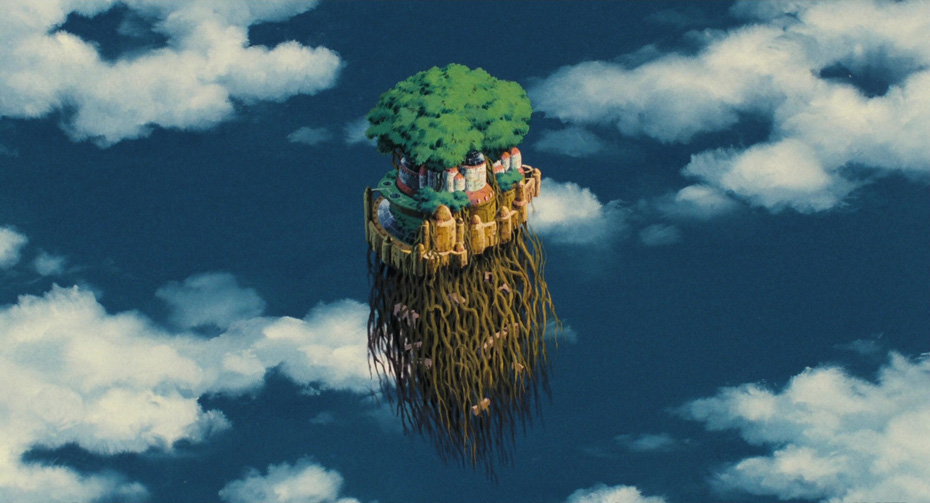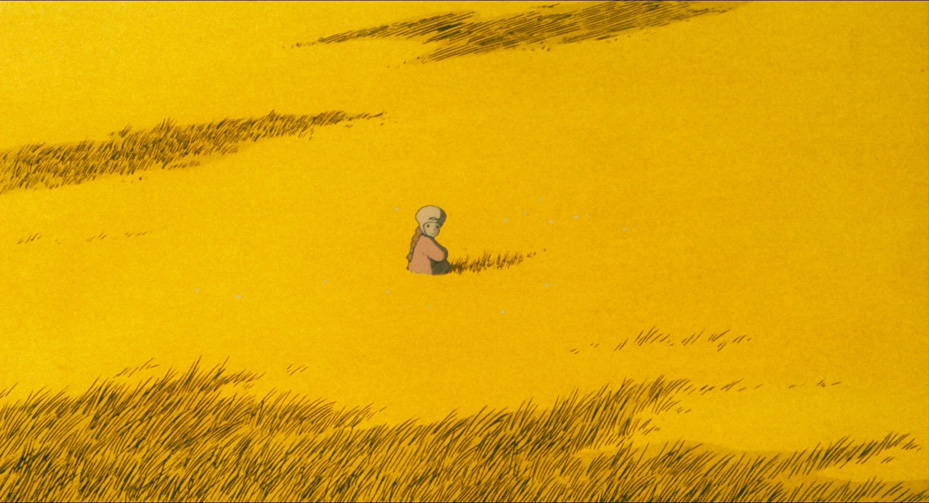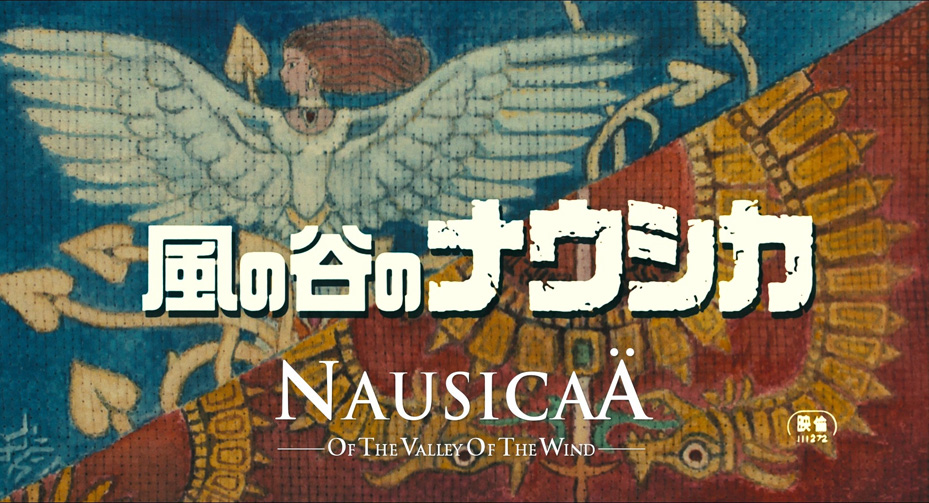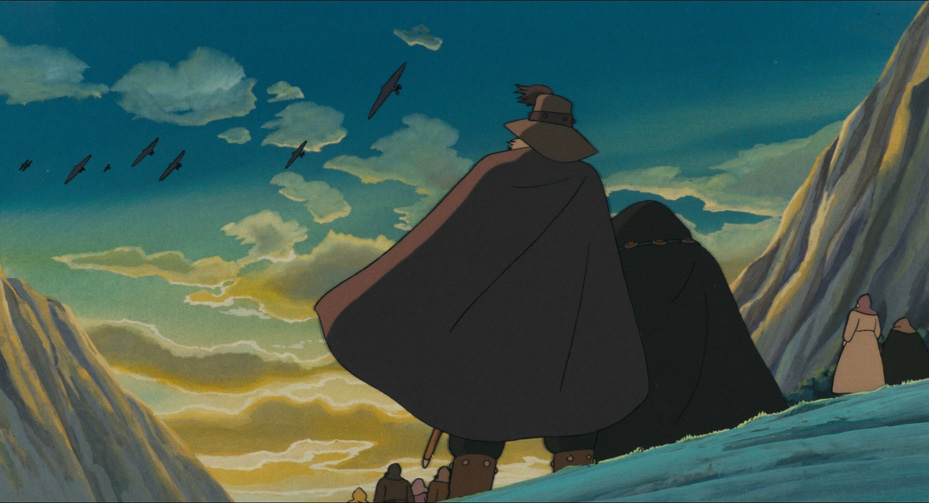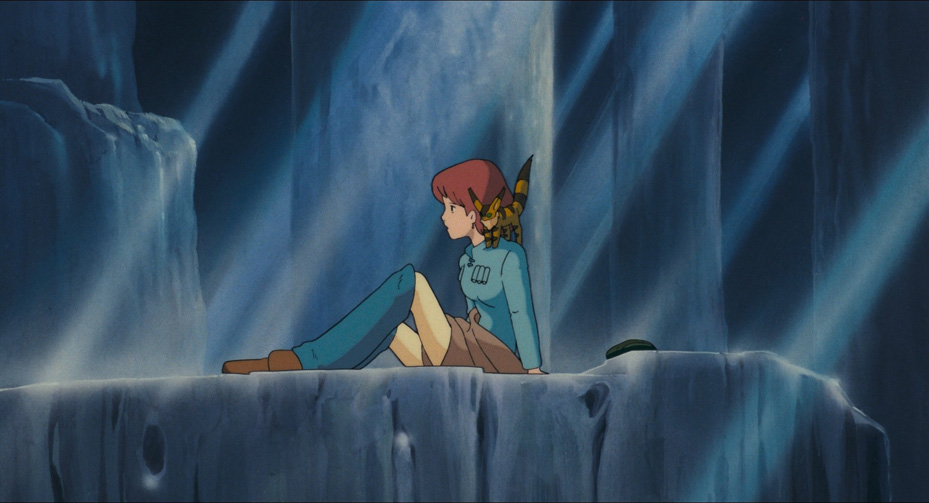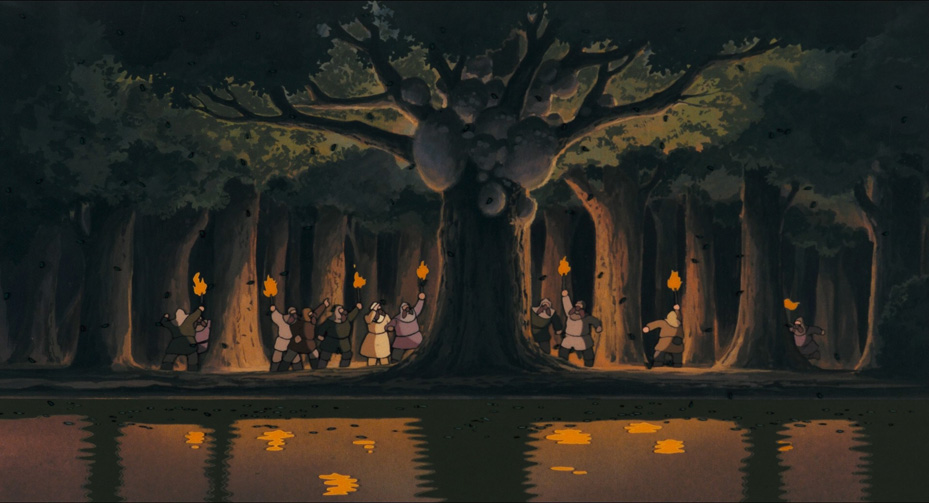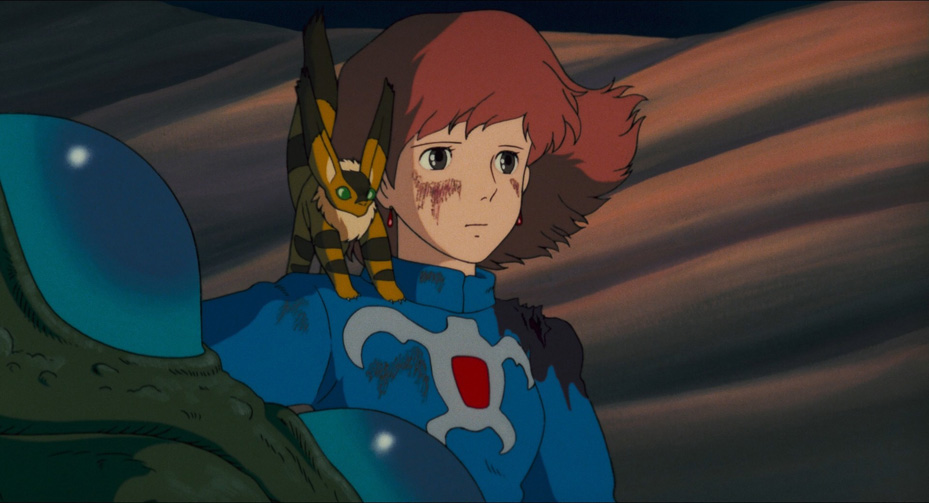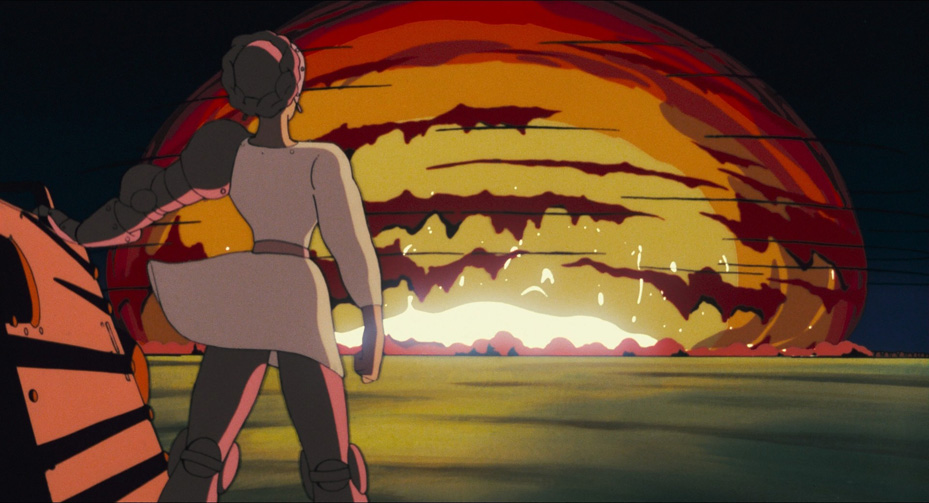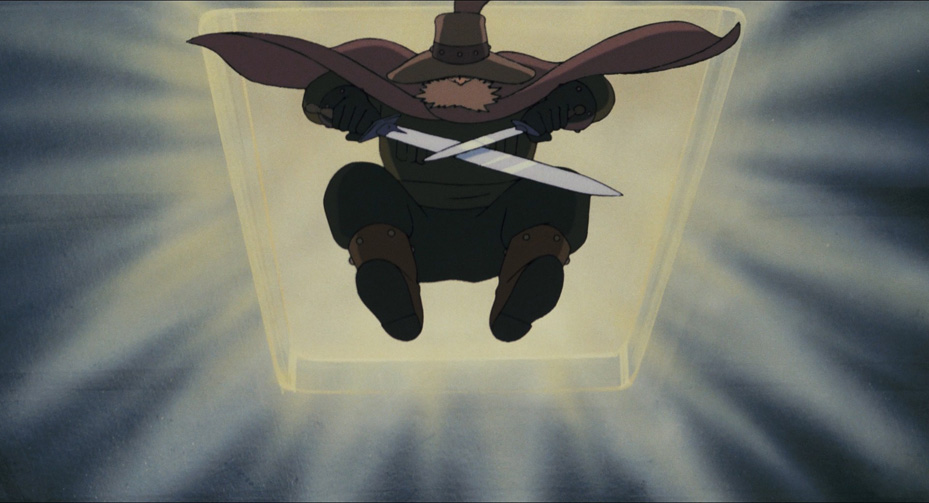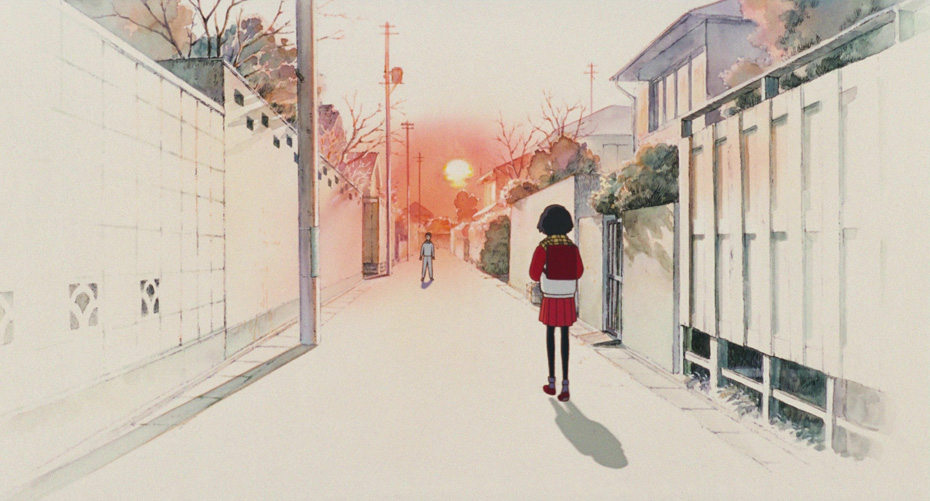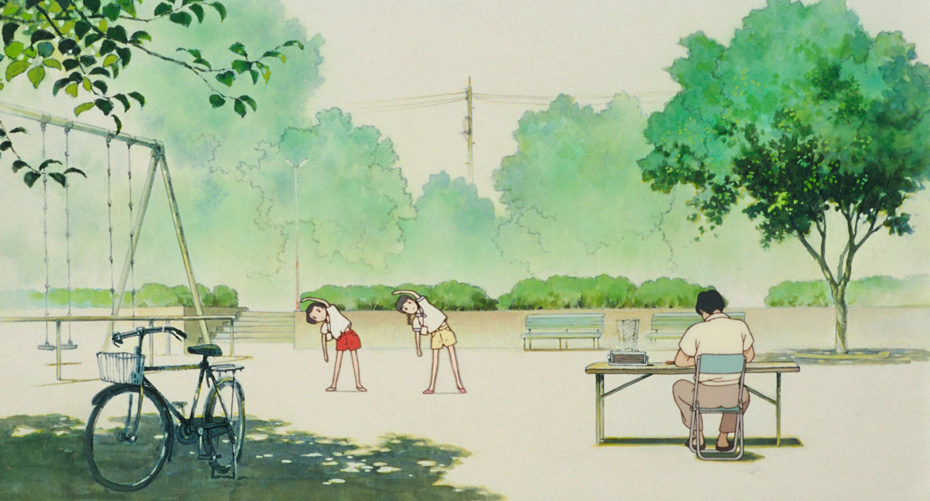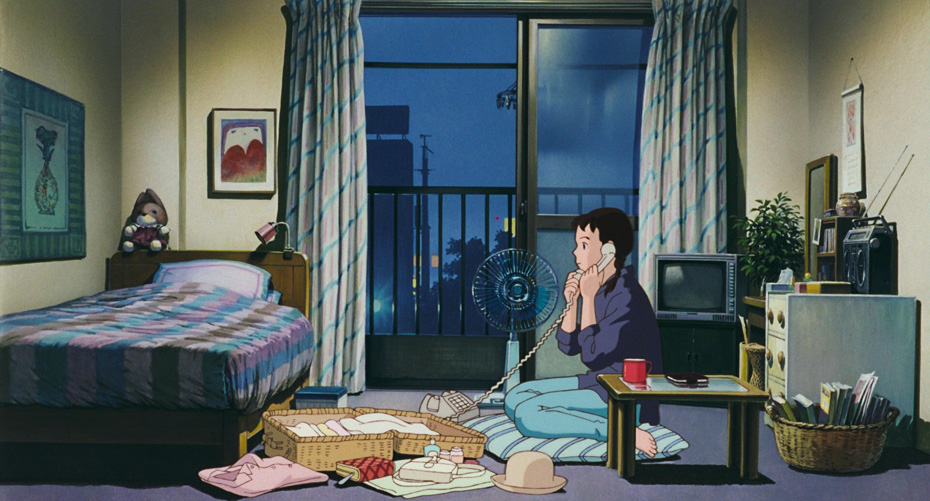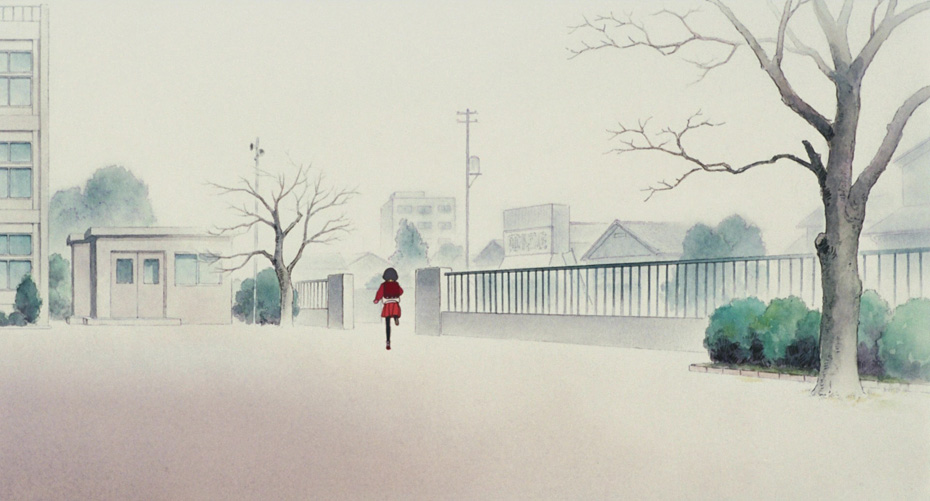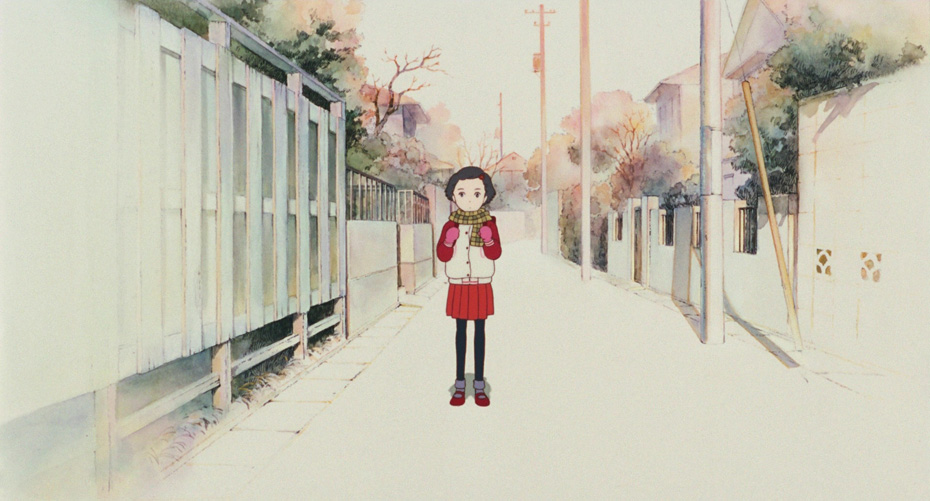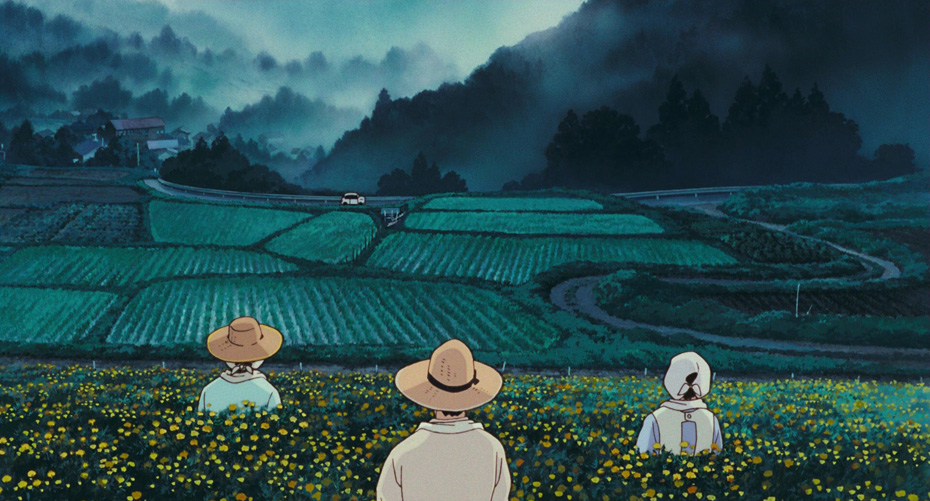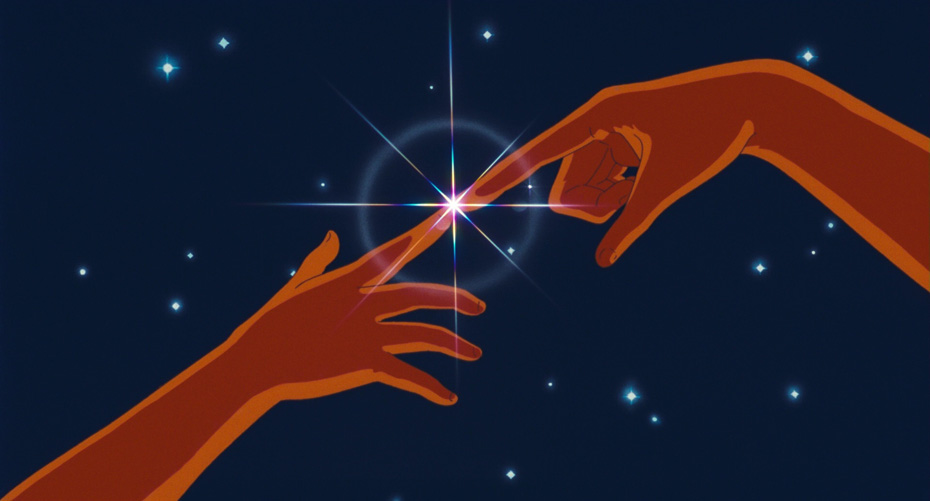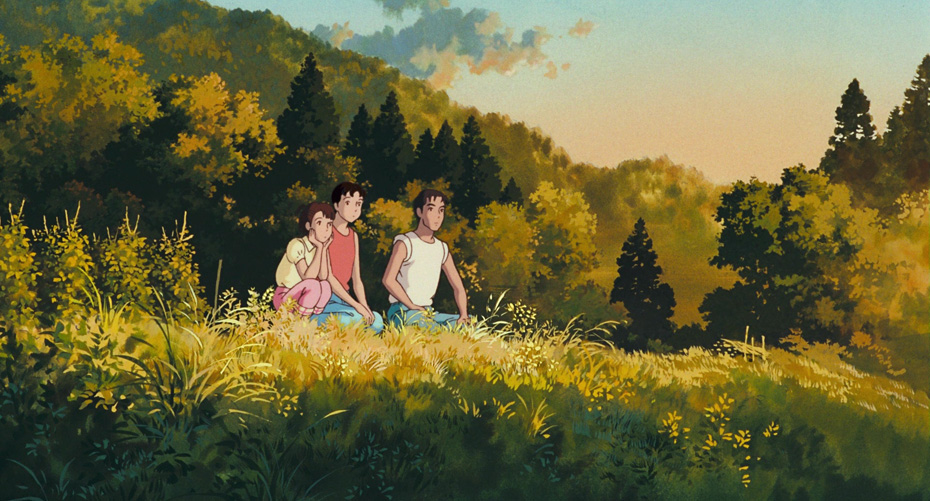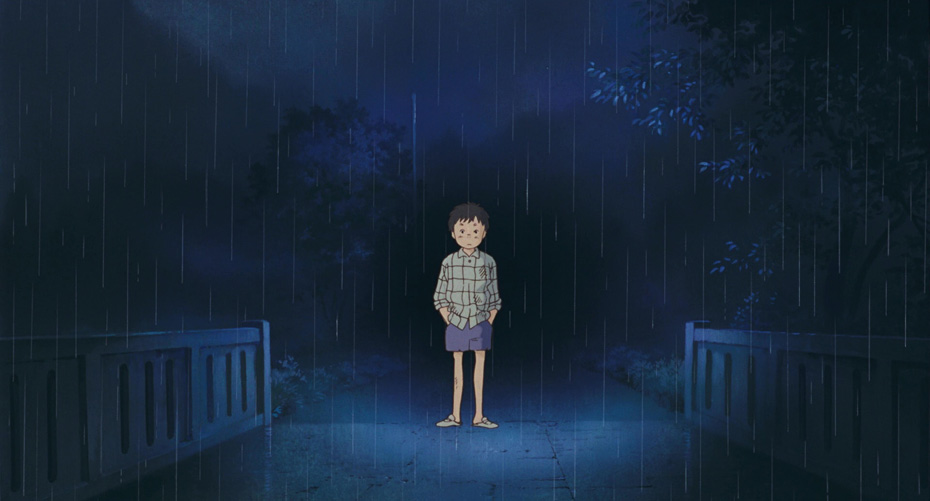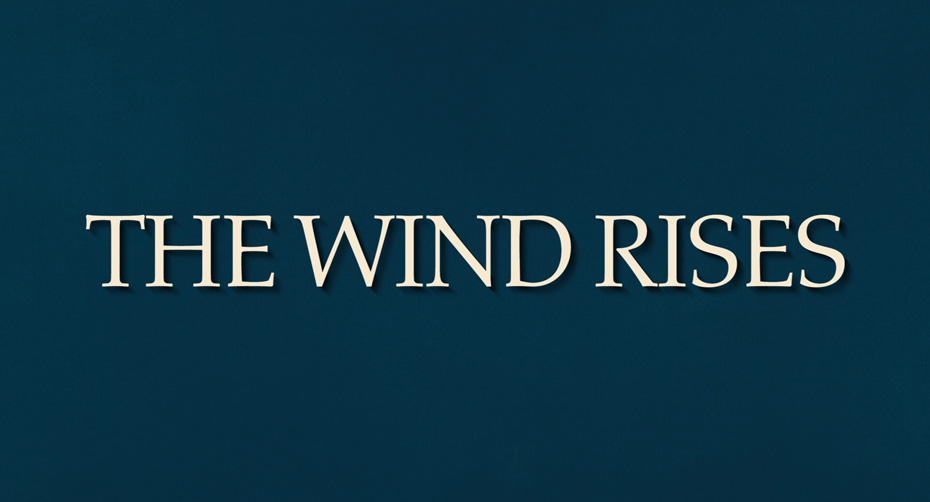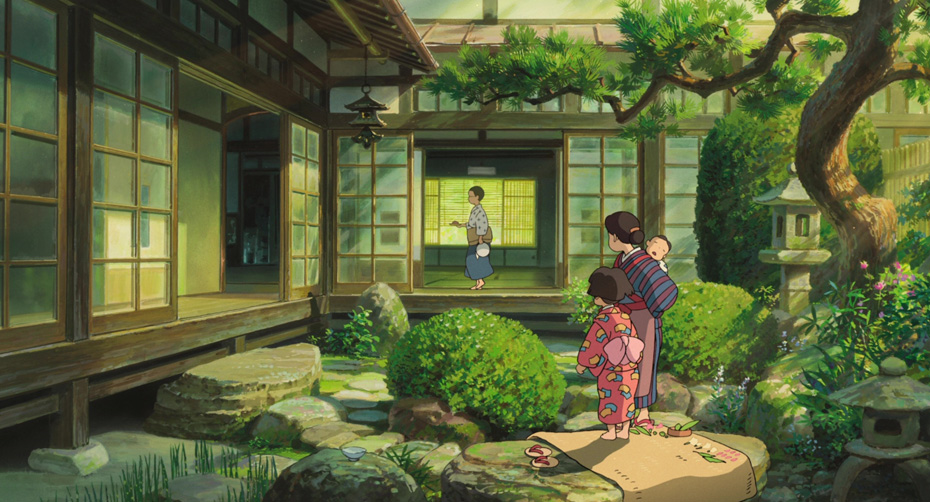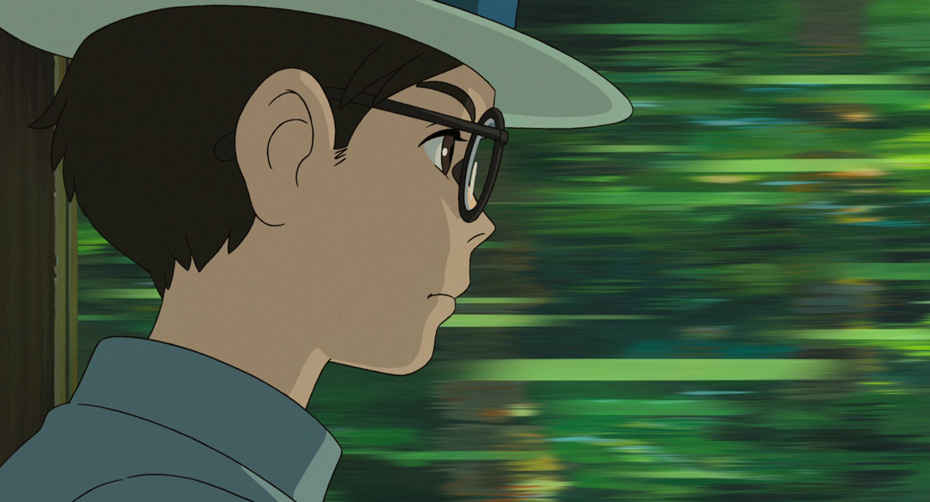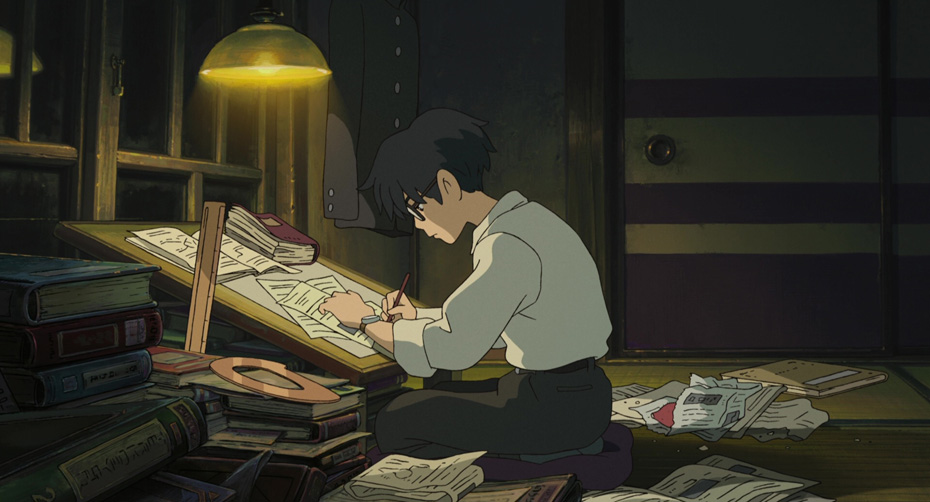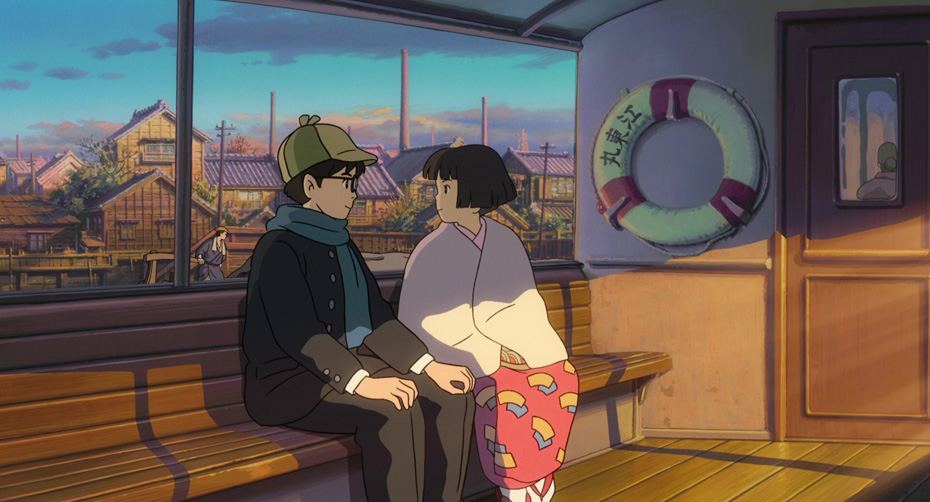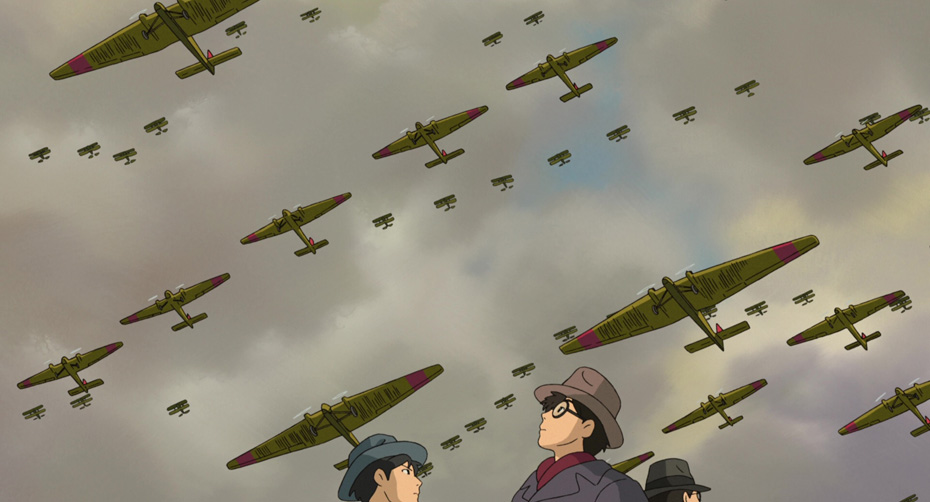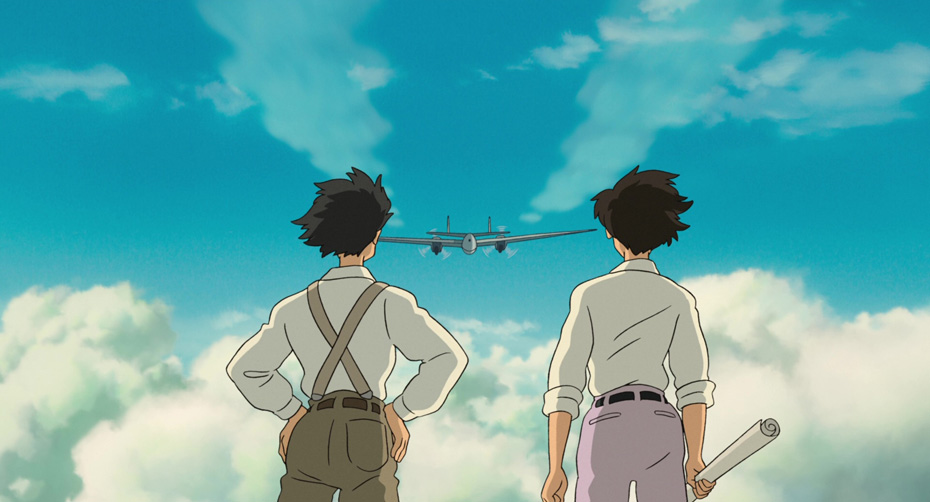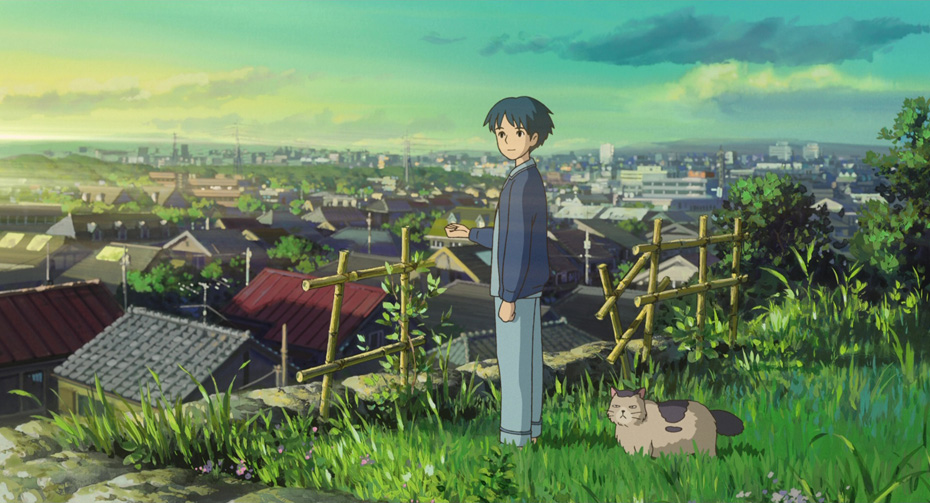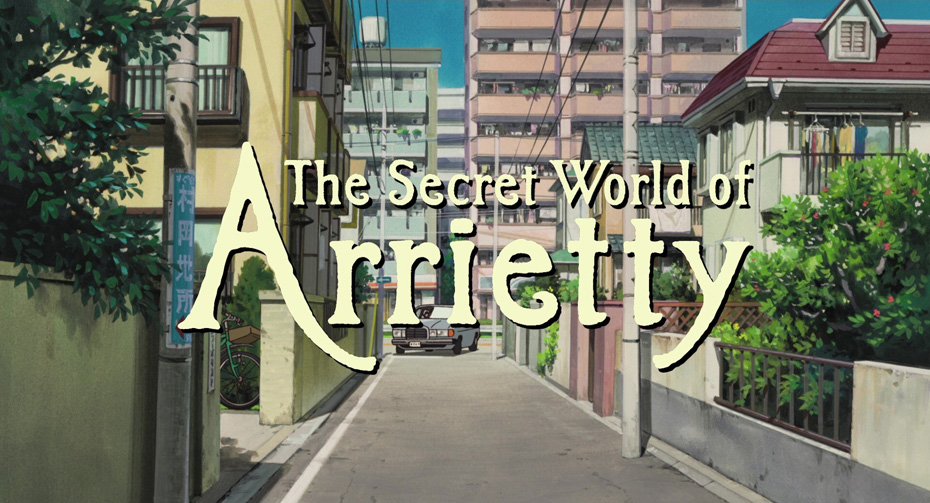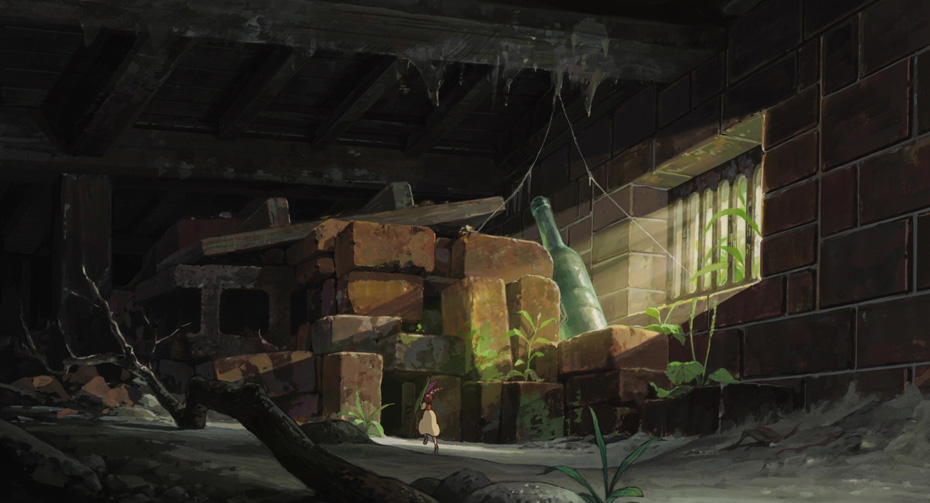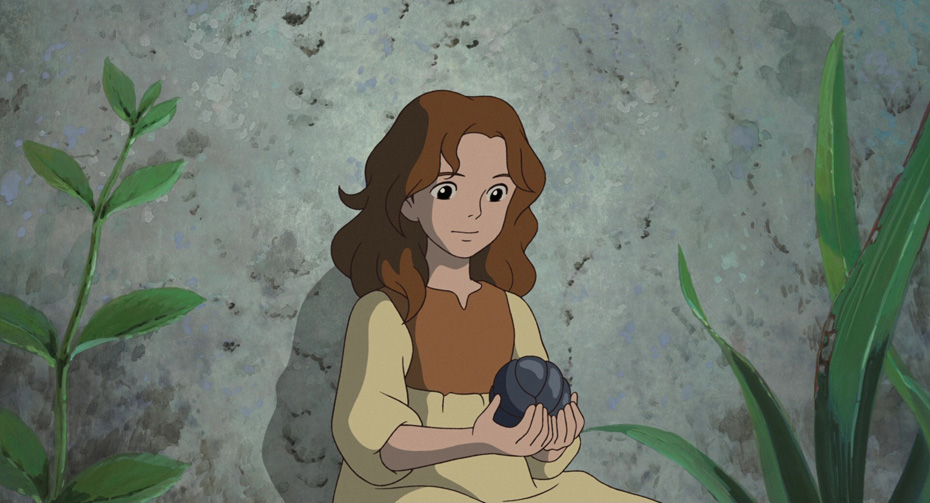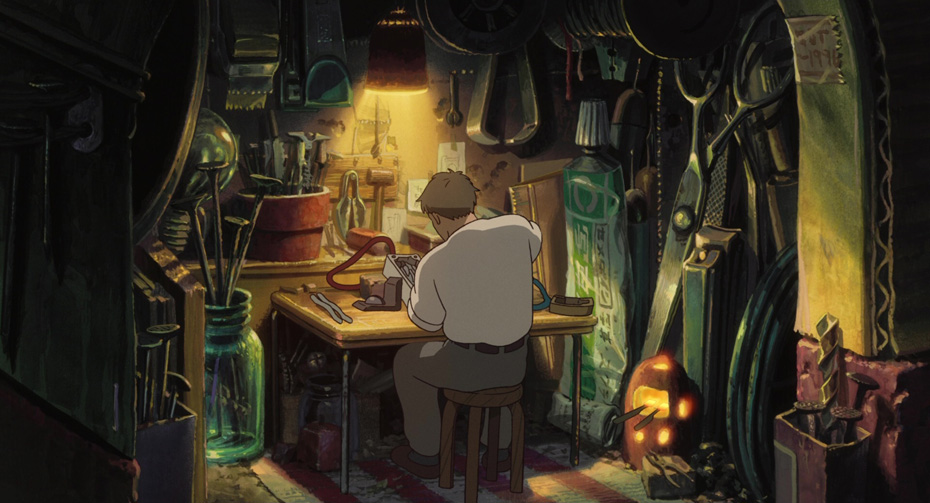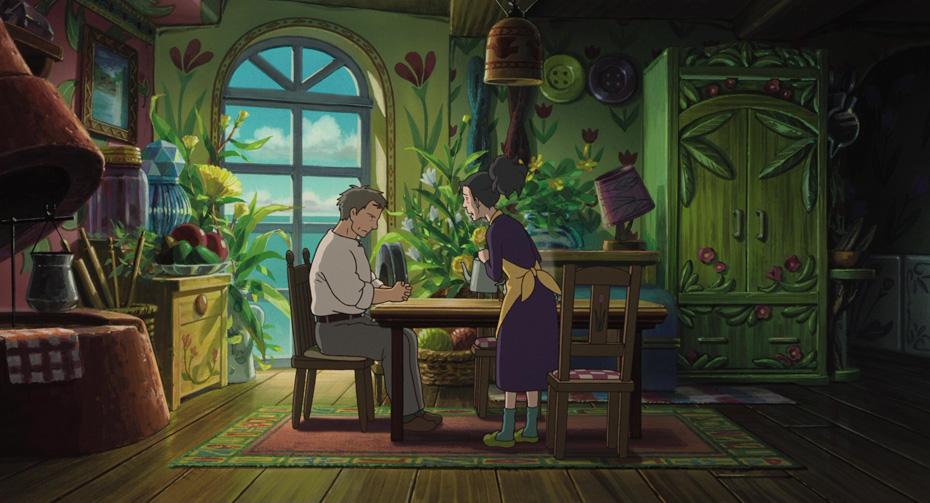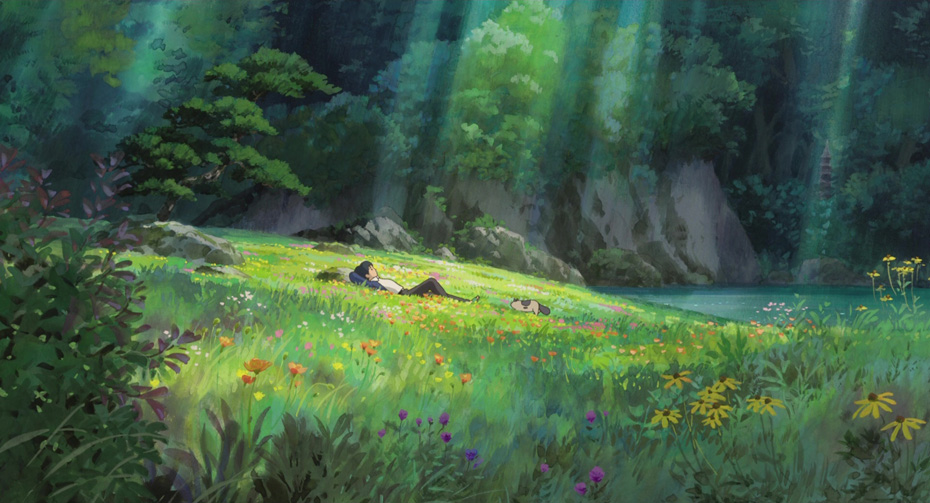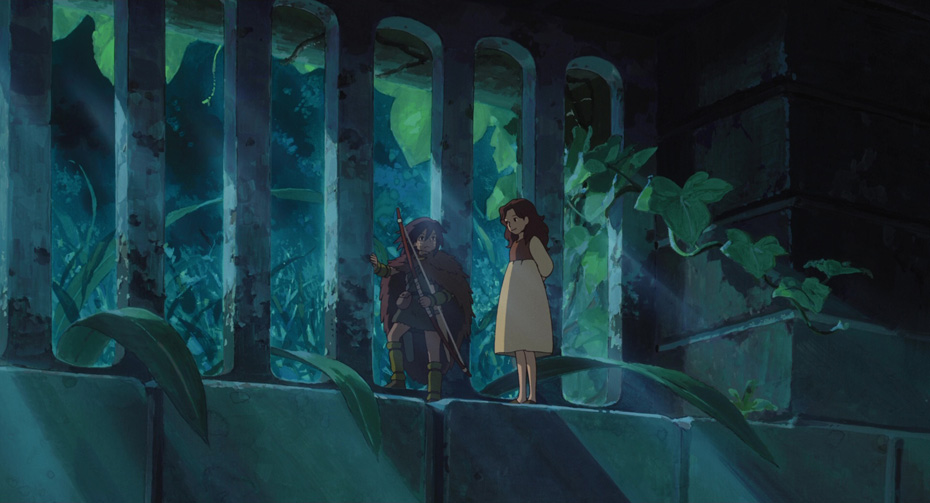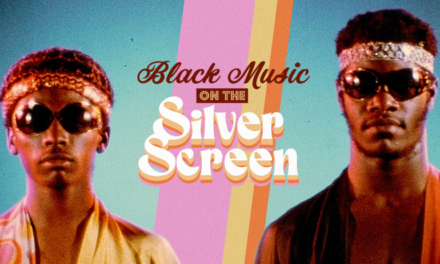THE TUESDAY DROP: 5,500+ New Shots
01.03.23 Get your Decks ready ShotDeck Community! In honor of Hayao Miyazaki’s birthday we’re adding shots from 10 acclaimed Studio Ghibli films, on top of the complete first season of The Sopranos. Remember you can always request films for future drops by clicking here!
THE SOPRANOS: SEASON ONE (1999)
THE SOPRANOS is an American crime drama television series created by David Chase. The series follows the life of Tony Soprano (James Gandolfini), an Italian-American mafia head based in New Jersey, who struggles to balance his criminal life with his family life, and who confides in his psychiatrist Jennifer Melfi (Lorraine Bracco). The series features Tony’s family members, mafia colleagues and rivals in prominent roles, and co-stars Edie Falco, Dominic Chianese, Tony Sirico and Jamie-Lynn Sigler. The Sopranos aired on HBO, beginning in 1997. In its first season, the series was nominated for eleven Primetime Emmy Awards, winning in the Outstanding lead Actress in a Drama Series (Falco) and Outstanding Writing for a Drama Series categories. Today, the series is widely recognized as one of the greatest and most influential television programs of all time, and a watershed series in the development of “premium cable” television. Chase worked on Season 1 with cinematographers Phil Abraham, Alik Sakharov and Bill Coleman.
One of the enduring legacies of The Sopranos is the innovations it made in television cinematography, moving away from traditional television coverage into a more “cinematic” visual aesthetic that placed the camera in unconventional places and eschewed standard coverage for longer takes that followed characters in space more. Chase and the DPs wanted to create a style that was a direct homage to the great gangster films it was referencing, such as the Godfather series and Goodfellas. They also allowed the cinematography to be a reflection of the tone and style of the story, selecting Zeiss variable prime lenses that would capture a specific quality of sharpness and contrast that were free from distortion and vignetting, and that would allow them to shoot with wider lenses that followed characters as they moved in longer takes.
KIKI’S DELIVERY SERVICE (1989)
KIKI’S DELIVERY SERVICE is a 2004 Japanese animated film written, produced and directed by Hayao Miyazaki, adapted from the 1985 novel of the same name by Eiko Kadono. The film stars the voice of Minami Takayama as Kiki, a young witch who moves to a new town and uses her ability to fly to start a flying courier service in the community. Rei Sakuma and Kappei Yamaguchi also star. Kiki’s Delivery Service premiered in the US at the Seattle International Film Festival, and is today widely considered one of the most important entries in Miyazaki’s filmography.
Studio Ghibli had moved entirely to computers during the production of My Neighbors the Yamadas (1999), and by the time that Kiki’s Delivery Service was in production, advancements in computer animation hardware and software allowed the team to incorporate framebuffer technologies into their graphic workstations, vastly increasing the efficiency of their cel animation methods and allowing them to incorporate the “camera” more into shot design. Elements such as shifting focus, pans, tracking shots and fade ins and fade outs were now possible for Kiki’s Delivery Service in ways that had not been previously possible in films produced by Miyazaki and the Studio.
PORCO ROSSO (1992)
PORCO ROSSO is a 1992 Japanese animated adventure-fantasy film written and directed by Hayao Miyazaki, based on Miyazaki’s three part 1989 watercolor manga Hikōtei Jidai (“The Age of the Flying Boat”). The film is set in Italy in the 1930s, when sky pirates in biplanes terrorize wealthy cruise ships sailing the Adriatic Sea. The only pilot brave enough to stop them is Porco Rosso, a former WWI pilot who was somehow turned into a pig during the war. Porco Rosse enlists the help of young mechanic Fio Piccolo and his longtime friend Madame Gina to battle the pirates. Porco Rosso was the number one film in Japan upon its release, grossing over $44 million worldwide from its $9 million budget, winning the Best Feature award at the Annecy International Animated Film Festival.
Porco Rosso was a unique film for Miyazaki, both tonally as well as in terms of its central character. Miyazaki films typically had younger protagonists, and Porco Rosso was a man closer to middle age. Miyazaki also began work with his team on the film at the advent of the Yugoslavian War, which made them feel that the film should have a more somber tone, both in the story as well as visually. The film itself calls back to animation styles of the past in its own visual language. Porco Rosso has a scene in a theater where he watches the Mickey Mouse short Plane Crazy, and several of the character designs explicitly represent other animated films and series, such as Popeye and Betty Boop. These influences were brought by Miyazaki and his team into the “Studio Ghibli style”, creating a unique, more adult-oriented film that stands out as one of the most unique in his canon.
PONYO (2008)
PONYO is a 2008 Japanese animated fantasy film written by Hayao Miyazaki. The film was his eighth for Studio Ghibli, and his tenth overall. The film tells the story of Ponyo, a goldfish who escapes from the ocean and is rescued by a five-year-old human boy, Sōsuke, when she washes ashore trapped in a glass jar. Ponyo is the daughter of a wizard, and transforms herself into a young girl using her father’s magic, and starts to fall in love with Sōsuke. Ponyo was a major commercial success, grossing over $204 million from its $34 million budget and becoming the fifth-highest grossing anime film of all time. An English-language version of the film was released by the Kennedy/Marshall Company and Walt Disney Pictures in 2009. Miyazaki worked on the film with animation director Katsuya Kondō, who had previously directed the 12 minute short film House Hunting for Studio Ghibli.
Miyazaki started conceiving of Ponyo when visiting the seaside town of Tomonoura in Setonaikai National Park, inspired by the setting, as well as from inspiration such as The Gate by Natsume Sōseki, John Everett Millais’s 1852 painting Ophelia, and elements of Hans Christian Andersen’s The Little Mermaid. Ophelia in particular inspired Miyazaki to evolve the animation identity of his films. He and Kondō wanted to entirely hand-animate Ponyo, eschewing the computer-generated animation techniques previously employed in films such as Princess Mononoke. Ponyo was animated using solid, simple lines, isolating basic animation elements and embracing its traditional animation techniques by depicting motion that could only be produced with hand-drawn images. The strongest example of this was the sailing ship moving towards the shore. This would normally be animated by drawing a single ship and sliding it across the frame. However, for Ponyo, Miyazaki insisted that the ships to be drawn frame-by-frame, leaning into the beauty of the medium through which the film was made.
MY NEIGHBOR TOTORO (1988)
MY NEIGHBOR TOTORO is a 1988 Japanese animated fantasy film written and directed by Hayao Miyazaki. The film stars the voices of Chika Sakamoto, Noriko Hidaka and Hitoshi Takagi, and tells the story of a professor’s two young daughters in postwar rural Japan, Satsuki and Mei, and their friendship with Totoro, a giant rabbit-like creature who is a wood spirit. My Neighbor Totoro was released to widespread acclaim, grossing over $41 million worldwide and earning the Animage Anime Grand Prix Prize, as well as the Mainichi Film Award. Today, it is widely considered one of the greatest animated films of all time.
Miyazaki wanted My Neighbor Totoro to delight and entertain its viewers with a soft touch, and set out to create a visual language that was both modern and nostalgic, fantastic yet believable, bold and warm. He and assistant director Tetsuya Endo, along with the eight animators who worked on the film over eight months, employed numerous animation techniques in the film to execute this look. The ripples in the water were designed with two colors of highlights and shading using watercolors, and the rain was scratched in the cels and then superimposed to give the droplets a softer feel. The animators took one month to create the tadpoles, which were created with four watercolor colors, and the water they swam in was blurred. Almost the entire film was storyboarded before being executed, with the exception of the opening sequence, where each element was made individually and then combined in time sheets.
GRAVE OF THE FIREFLIES (1988)
GRAVE OF THE FIREFLIES is a 1988 Japanese animated film written and directed by Isao Takahata for Studio Ghibli, based on a 1967 short story by Akiyuki Nosaka. The film stars Tsutomu Tatsumi, Ayano Shiraishi, Yoshiko Shinohara and Akemi Yamaguchi. Set in the final months of World War II, the film follows 14-year-old Seita and his sister Setsuko, who are orphaned when their mother is killed during an air raid in Kobe, Japan. The siblings struggle to survive in the intensity of war. Grave of the Fireflies has spawned two live-action remakes and is today considered both one of the greatest war films of all time, and one of the most significant examples of Japanese animated cinema.
Takahata and the animation team wanted to give Grave of the Fireflies a softer, more gentle visual feel than the animated films that were customary at the time. While they originally considered non-traditional cel animation techniques, the release schedule that the film was on didn’t allow them time to experiment. Instead, he and color coordinator Michiyo Yasudo decided to draw the illustration outlines in brown, rather than the customary black. This technique had never been used in anime before, and though it created challenges of not having as much contrast as black, it helped give the film a softness and dreaminess that pushed it into different territory than anything previously made.
CASTLE IN THE SKY (1986)
CASTLE IN THE SKY is a 1986 Japanese animated fantasy adventure film written and directed by Hayao Miyazaki, and the first film produced by Studio Ghibli. Set in a fictional version of the late 19th century, the film follows the adventures of a boy and girl who are trying to keep a powerful crystal away from the army, a group of secret agents, and a family of pirates, while searching for a legendary floating castle. It stars Mayumi Tanaka, Keiko Yokozawa, Kotoe Hatsui and Minori Terada. Castle in the Sky grossed over $16 million from its $3 million budget, and has become a landmark of Japanese cinema, animation and of the steampunk and dieselpunk genres. Miyazaki worked on the film with cinematographer Hirokata Takahashi.
Drawing inspiration for Castle in the Sky came from Edwardian-era war machines and clothing, mixed with Biblical and Hindu legends. The East-meets-West iconography of the film comes through in the design of the medieval castle’s architecture, the Gothic buildings in the village near the fort, and the Victorian look and feel of the pirate ship. The interactive panels and tombstones in Laputa make use of ancient Babylonian cuneiform script and also make references to the Hindu epic Ramayana. Laputa itself also has ziggurat-like structures resembling Babylon in Mesopotamia, with murals that reference ancient Egyptian and Assyrian art.
NAUSICAÄ OF THE VALLEY OF THE WIND is a 1984 Japanese post-apocalyptic anime film written and directed by Hayao Miyazaki, based on his own 1982 manga of the same name. Set in the future after an apocalyptic conflict has devastated most of the world’s ecosystem, the film follows the surviving humans living in scattered semi-hospitable “toxic jungles”. Nausicaä lives in the arid Valley of the Wind and can communicate with the massive insects that populate the jungle. Under the guidance of veteran warrior Lord Yupa, Nausicaä works to bring peace back to the planet. Nausicaä of the Valley of the Wind grossed over $14 million from its $758,000 budget, and was internationally distributed after being translated into multiple languages. Today, it is considered one of Japan’s most significant animated films.
Nausicaä of the Valley of the Wind was animated over the course of nine months, with Miyazaki agreeing to have his manga adapted on the condition that he could direct the film. Miyazaki and the team referenced books such as Lord of the Rings and Dune to build the visual language of the film, as well as the fantasy book series Earthsea, created by Ursula K. Le Guin, drawing on the books’ universe creation, creatures and characters. Miyazaki wanted the film to have a bold and vibrant look and feel, building off the aesthetic of the manga. In the end, over 263 distinct colors were used in the film by the animation team.
ONLY YESTERDAY (1991)
ONLY YESTERDAY is a 1991 Japanese animated drama film written and directed by Isao Takahata for Studio Ghibli, based on the 1982 manga of the same name by Hotaru Okamoto and Yuko Tone. The film follows unmarried career woman Taeko Okajima (Miki Imai), who takes her first extended trip outside her native Tokyo when she travels to rural Yamagata to visit her sister’s family during the annual safflower harvest. As her vacation progresses, she has flashbacks about her childhood, and wonders if her stress-filled adult life is what the young Taeko would have wanted for herself. Only Yesterday was a critical and commercial hit upon its release, becoming the highest-grossing Japanese film of the year, and subsequently spawning an English-language version and a live action special based on the original manga.
Takahata wanted to try a different animation style for Only Yesterday in keeping with its quieter, more realistic genre elements and adult audience targets. In Japanese animation to date, the tradition had been for dialogue to be recorded after the animation was completed, but for Only Yesterday, Takahata wanted to record the dialogue first, and then have the animators fit the animation to the spoken dialogue. Takahata also had the voice actors record some of their lines on camera, using footage of the performances as a guide for both the design and the animation. Unlike typical anime style, the characters in Only Yesterday had more realistic facial muscles and expressions, given the materials that the animators were working from. The notable exception to this rule was in the scenes of Taeko’s past, which Takahata had animated before the voices were recorded, creating a subtle contrast in the look of the scenes in Taeko’s childhood versus present day.
THE WIND RISES (2013)
THE WIND RISES is a 2013 animated historical drama film written and directed by Hayao Miyazaki. The film is a fictionalized biographical film depicting the life of Jiro Horikoshi, the designer of the Mitsubishi A5M and A6M fighter aircrafts, used by Japan during WW2, and is adapted from Miyazaki’s manga of the same name, which uses Tatsuo Hori’s 1937 semi-autobiographical novel The Wind Has Risen and the life of Horikoshi as it’s sources. The film stars the voices of Hideaki Anno, Miori Takimoto, Hidetoshi Nishijima, Masahiko Nishimura, Morio Kazama, Keiko Takeshita, Mirai Shida, Jun Kunimura, and Shinobu Otake. The Wind Rises opened at the Venice International Film Festival, before going on to play at the Toronto International Film Festival, Telluride Film Festival and New York Film Festival. It was the highest-grossing Japanese film of 2013, grossing over $136 million from its $30 million budget, and going on to earn an Academy Award nomination for best Animated Feature.
The Wind Rises was an animated film geared at adults, a relative rarity for Studio Ghibli films. Miyazaki wanted to infuse the film with anti-war and pro-environmental themes, ideas that have been at the bedrock of his entire filmography. Miyazaki wanted to still capture the optimism of Jiro and the beauty of his work, as well as his admiration for Italian aeronautical designer Caproni, and the animation style of the planes and engineering is reflective of Art Deco paintings and drawings of the 1930s period in which the film takes place. The contrast of this style against the more classical “Studio Ghibli” style helps create a unique visual language for one of Miyazaki’s most celebrated films.
THE SECRET WORLD OF ARRIETTY (2010)
THE SECRET WORLD OF ARRIETTY is a 2010 Japanese animated fantasy film directed by Hiromasa Yonebayashi (in his feature debut) and written by Hayao Miyazaki and Keiko Niwa under Studio Ghibli. The film is based on the 1952 novel The Borrowers by Mary Norton, and tells the story of The Clock family, a family of tiny “Borrowers” who live in another family’s home and steal their goods. All is well until the humans discover their daughter, Arrietty, and they must flee for their lives. The film stars the voices of Mirai Shida, Ryunosuke Kamiki, Shinobu Otake, Keiko Takeshita, Tatsuya Fujiwara, Tomokazu Miura and Kirin Kiki. The Secret World of Arrietty was the number one film at the Japanese box office in 2010, and grossed over $145 million worldwide from its $23 million budget, going on to win the Animation of the Year award at the Japanese Academy Prize ceremony. Yonebayashi worked on the film with lead animator Kazuo Oga.
One of the biggest challenges Yonebayashi and Oga faced in directing The Secret World of Arrietty was translating a popular British book into a Japanese film for Japanese audiences. No previous adaptation of Borrowers had embraced the scale of four-inch tall people living in a human world, and Yonebayashi and Oga embraced the animated medium to push the sense of scale as a storytelling device in both the visual treatment of the film as well as in its sound treatment, where ticks of clocks and human footsteps were given loud booming echoes and used as devices to build tension in the story. Yonebayashi and Oga’s team took great care to animate the details of Arrietty and her family’s small-scale world, creating a dense and beautiful portrait of their lives, and adding a sense of scale and drama to an otherwise contained story.

